Please donate £1 to support your parish
The Fools Pilgrimage page 4 Edition 34

See below for details page 15


Seminarians pastoral mission in Kenya
Carmel College students publish children's book page 13



St Thomas of Hereford 2nd October page 5

Please donate £1 to support your parish
The Fools Pilgrimage page 4 Edition 34

See below for details page 15


Seminarians pastoral mission in Kenya
Carmel College students publish children's book page 13



St Thomas of Hereford 2nd October page 5
Bishop-elect Philip, you have our full support... a warm welcome and our prayers await you as you take up your new role among God's people
His Holiness Pope Francis has appointed Bishop Philip Moger as the new Bishop of Plymouth.
The Diocese has been in a period of transition for over two years since Bishop Mark O’Toole, Bishop of Plymouth between 2014 and 2022, was appointed Archbishop of Cardiff. During that time the Diocese has been under the leadership of Canon Paul Cummins who has acted as Diocesan Administrator, a role which comes with most of the authority of a Diocesan Bishop albeit without the ability to make significant changes.
A priest of the Diocese of Leeds for over 40 years, Bishop Moger has, until now, served as an Auxiliary Bishop for the Archdiocese of Southwark.
Following the news of his appointment, Bishop Moger said: “I’m very honoured to be asked by Pope Francis to be the 10th Bishop of this great Diocese of Plymouth. I know that the diocese has been without a bishop for the last two years, so I am very grateful to Canon Paul Cummins, who has administered the diocese during the vacancy so ably and generously, and all who have supported him. I look forward to visiting and getting to know the clergy, religious and lay faithful in this beautiful part of the Lord’s vineyard.
“At the same time. I shall very much miss the Archdiocese of Southwark, where I’ve been privileged to minister for the last 18 months. The Archbishop, my fellow Auxiliary Bishop,

clergy, religious and lay faithful quickly took me to themselves and gave me their love, friendship and encouragement.”
On hearing news of the appointment Archbishop John Wilson, the Metropolitan Archbishop of Southwark, said: “On behalf of everyone in our Archdiocese of Southwark, I would like to extend our heartfelt congratulations to Bishop Philip Moger on his appointment by our Holy Father as the new Bishop of Plymouth.
“Bishop Philip’s many gifts, and his warmth and kindness, have been so very much appreciated during his 18 months with us as an Auxiliary Bishop.
“We thank him for all he has done in Southwark and assure him of our prayers and best wishes for his new ministry. May Christ the Good Shepherd continue to bless him and all those he will serve.”
Congratulating Bishop Philip Moger, Cardinal Vincent Nichols added, “I would like to express my sincere gratitude to Canon Paul Cummins who has led the diocese over the last two years. I thank him most sincerely for the contributions he has made not only to the Diocese of Plymouth but also to the working of the Bishops’ Conference of England in Wales.”
Canon Paul Cummins said: “We welcome Bishop-elect Philip to the Diocese of Plymouth as our new shepherd. The faith community of the southwest has been well-served by its
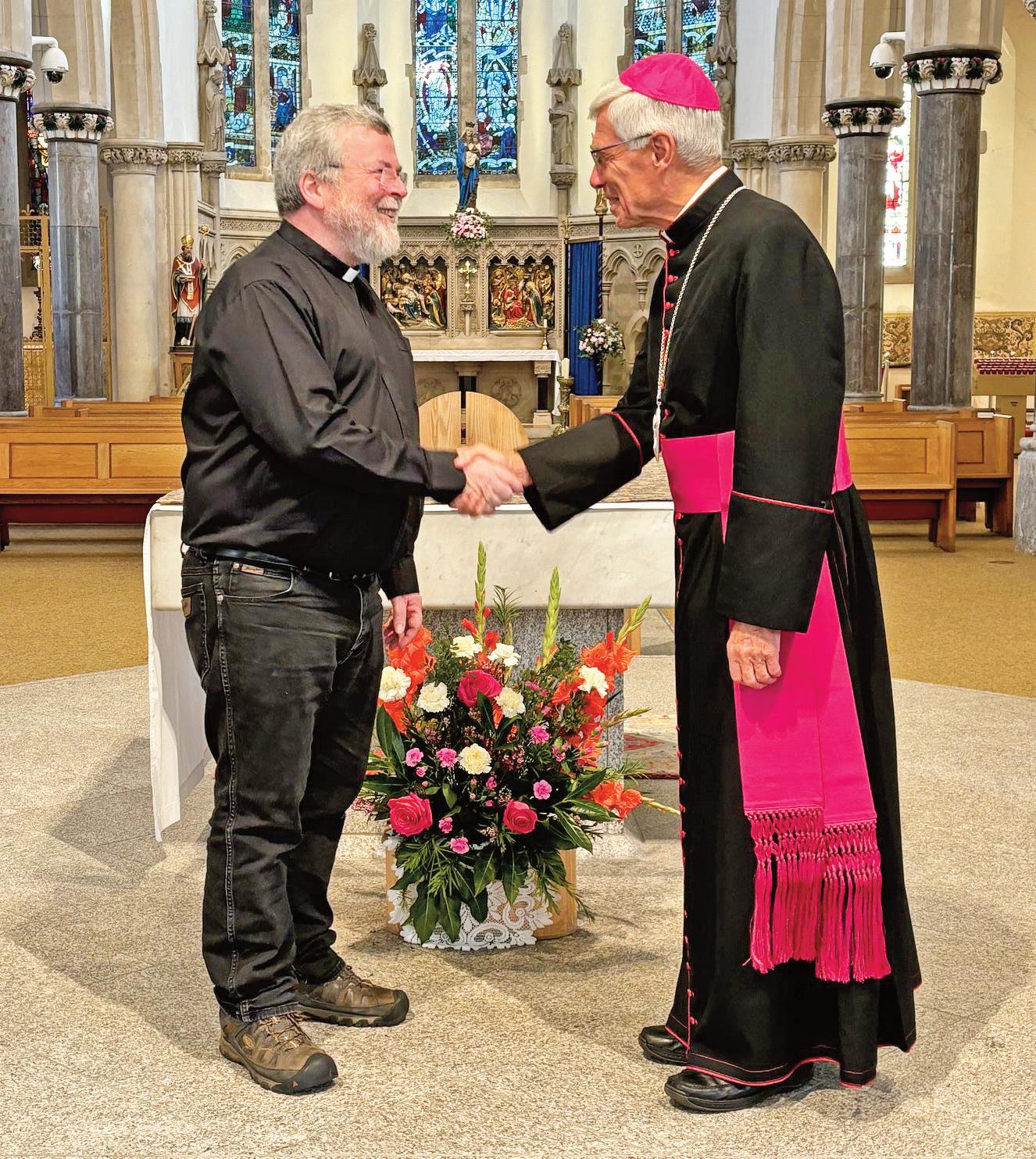
Canon Paul congratulates Bishop-Elect Philip Photograph courtesy of Diocese of Plymouth
predecessors, and we are confident that our Bishop-elect will continue their legacy.
“Bishop-elect Philip, you have our full support as you prepare to join us here. We pray that all the saints of the Diocese of Plymouth walk with you each step of the way. Know that a warm welcome and our prayers await you as you take up your new role among God’s people. We look forward to your arrival.”
News of the appointment was greeted with a round of applause at the Adoremus National Eucharistic Congress by parishioners attending from the Plymouth Diocese.
The date for Bishop-elect Philip Moger’s Installation as Diocesan Bishop is Saturday 9 November at the Cathedral Church of St Mary and St Boniface, Plymouth.


CONTACT US:
The Catholic Post is published by its owners Bellcourt Ltd and is wholly independent of and separate from any previous newspaper. The Catholic Post is published on the last Sunday of the month previous to publication date.
EDITOR:
Nick Layton
email: editor@catholicpost.co.uk
ADVERTISING:
Charlotte / Bellcourt Ltd.
01440 730399
charlotter@cathcom.org
DESIGN & LAYOUT:
David Lodge, davidl@cathcom.org
PUBLISHED BY:
Bellcourt Ltd. N2 Blois Meadow Business Centre, Blois Road, Steeple Bumpstead, Haverhill, Suffolk CB9 7BN
01440 730399
ARTICLES TO:
The Catholic Post
email: editor@catholicpost.co.uk or davidl@cathcom.org
Please send articles for publication by email, supplying any photos separate to the text We welcome contributions
Here are answers to some basic questions about writing for The Catholic Post How long should articles be?
Usually it seems to work out best if contributors simply say what they have to say and let us worry about finding a spot for it in the paper. What is the submission procedure?
Please send as a Word file attached to an e-mail. To submit articles for publication, send to editor@catholicpost.co.uk
Charts, graphs, and photos should be submitted as separate PDFs. Electronic photos should not be embedded or pasted into a Word document as this reduces their quality.
Photographs and Illustrations
Photographs and Illustrations should be supplied electronically as high resolution JPEG (*.JPG) files).
Photographs and illustrations should be sent in colour with a resolution of 300 dpi and a minimum size of 100 mm x 100 mm when printed (approx. 1200 pixels wide onscreen).
Computer print-outs are not acceptable. Screen captures are not ideal as they are usually not very high
Parental permission should be sought before submitting photographs of minors. Source information -
DW = Diocesan Website.
ICN = Independent Catholic News
Views expressed in The Catholic Post are not necessarily those of the editor Last date for copy is the LAST DAY of the month prior to publication.

So maybe that is why, out of respect for the dead and the sensitivities of their families, wherever possible decommissioned cemeteries are simply grassed over and either left as they are or are turned into public parks.
When we bury our loved ones, or when we contemplate our own burial, we tend to assume that their remains, and ours, will be left in peace, but increasingly you have to wonder whether changing priorities might one day threaten that expectation.
A recent documentary series followed the work of hundreds of archaeologists tasked with digging up and relocating the remains of thousands of people in 18th and 19th century burial grounds that were in the way of the HS2 high-speed London-Birmingham railway. Presumably the age of the burials was a mitigating factor in planning permission and exhumation orders being granted, albeit on condition that the remains were unearthed and reburied in new locations with due care and respect. Even if we commend the effort made to relocate those burials, might it have supported an even higher value not to have disturbed them in the first place and to have rerouted the railway or re-sited the stations instead? And we’ve seen similar efforts being required ahead of the vast amount of underground construction work associated with London’s Crossrail project. Some were socalled “plague pit” burials which are found all over the capital, others were simply what had once been regular cemeteries now well below today’s ground level. In either case I suppose there would be an understandable concern not to drive foundations into, or tunnel through, ground where it was known there were human remains.
So many archaeological programmes feature the examination of skeletons – how did these individuals live and how did they die? – and the storage facilities of our national museums and institutions are packed with tens of thousands of boxes of skeletons and bones for the same purpose. These were all people who lived and died and were buried, and just because many of them are ancient, and even if they can no longer be identified, is it entirely justified to dig them up and to keep them in storage simply in a quest for knowledge, still less to put them on
display? It probably doesn’t bother us all that much when the remains are of pharaohs from Egypt, Stone Age cave dwellers, Irish bog bodies, Celtic warriors, Viking invaders, or even Richard III under a car park in Leicester, but how would we feel if not many years from now archaeologists started digging up war graves in France for example? I think that would be a little too close for comfort, but where do we draw the line?
The mumification of dead bodies in ancient Egypt was a preparation for their final journey to the afterlife, and grave goods were buried with them in the belief that they would need them in that afterlife. But then, millennia later, along came archaeologists who dug up their remains and removed those possessions. Surely it violates the religious practices of the time by interfering with what it was believed happened after death? Also isn’t taking someone else’s property theft (whether or not they are dead)? What gives archaeologists the right to keep digging up people who have been buried? These were once living persons; when they died their loved ones buried them with the expectation that it would be their resting place for eternity. What right do we have to dig them up again? We have the means these days of recording, copying, or modelling skeletons or their constituent parts – we don’t need the originals.
In this country, the “Burial Act” of 1857 regulates where and how deceased persons may be buried, and provides for the exhumation of human remains. The Act made it illegal to disturb a grave other than for an officially sanctioned exhumation. It was based on the Victorian principle that a burial was for eternity. A 2015 Amendment to the Act allowing the Church of England to reuse graves was criticised as offensive and distressing to the living, and disrespectful to the dead. A 1981 Act requires that for burials over fifty-years-old prior removal and re-interment or cremation of remains must be undertaken where a burial ground is to be built on.
One of our local cemeteries founded in 1854 was one of the town’s biggest graveyards with some 11,000 people buried there by the time it was closed in 1962. I remember all the gravestones being taken up and placed against the surrounding stone wall, and which were finally removed in 1978. Over the years it was landscaped and now contains a children’s play area and various recreational facilities. Many people who now live in that neighbourhood are fairly recent arrivals and probably have no idea that it used to be a cemetery and that when they use the park they are walking and playing on top of the remains of some 11,000 people. I wonder how those who have family members buried there feel about that situation? It is a public park of course, but should it be?
I’m sure it would be far less expensive for a local council to reuse a cemetery it already owns than to have to purchase new land for that purpose, but is reusing old cemeteries too problematic to be considered? It’s all very well legislation stating that cemetery land can be reused after a hundred years or whatever, but that is no guarantee of what those digging new graves are going to literally unearth in the process. So maybe that is why, out of respect for the dead and the sensitivities of their families, wherever possible decommissioned cemeteries are simply grassed over and either left as they are or are turned into public parks.
When, as a priest, I conduct a burial, the rite includes this prayer of commendation offered to God: Grant that our brother/sister may sleep here in peace until you awaken him/her to glory. An alternative prayer says: In your mercy look upon this grave, so that your servant may sleep here in peace, and on the day of judgment raise him/her up to dwell with your saints in paradise. It should therefore be that person’s final resting place - even the law respects and protects that expectation, as we saw earlier. Why is an archaeologist disturbing a grave and the remains buried there regarded as less of a violation the more time that has passed?
Speaking for myself I’m planning to be buried rather than cremated. That said, it is highly unlikely that archaeologists in the future would have any reason to excavate my grave, so while the chances are that I don’t have to be concerned about being unearthed and moved elsewhere – which would be a slight interruption to my eternal rest. On the other hand, I will be dead so I probably won’t even notice.
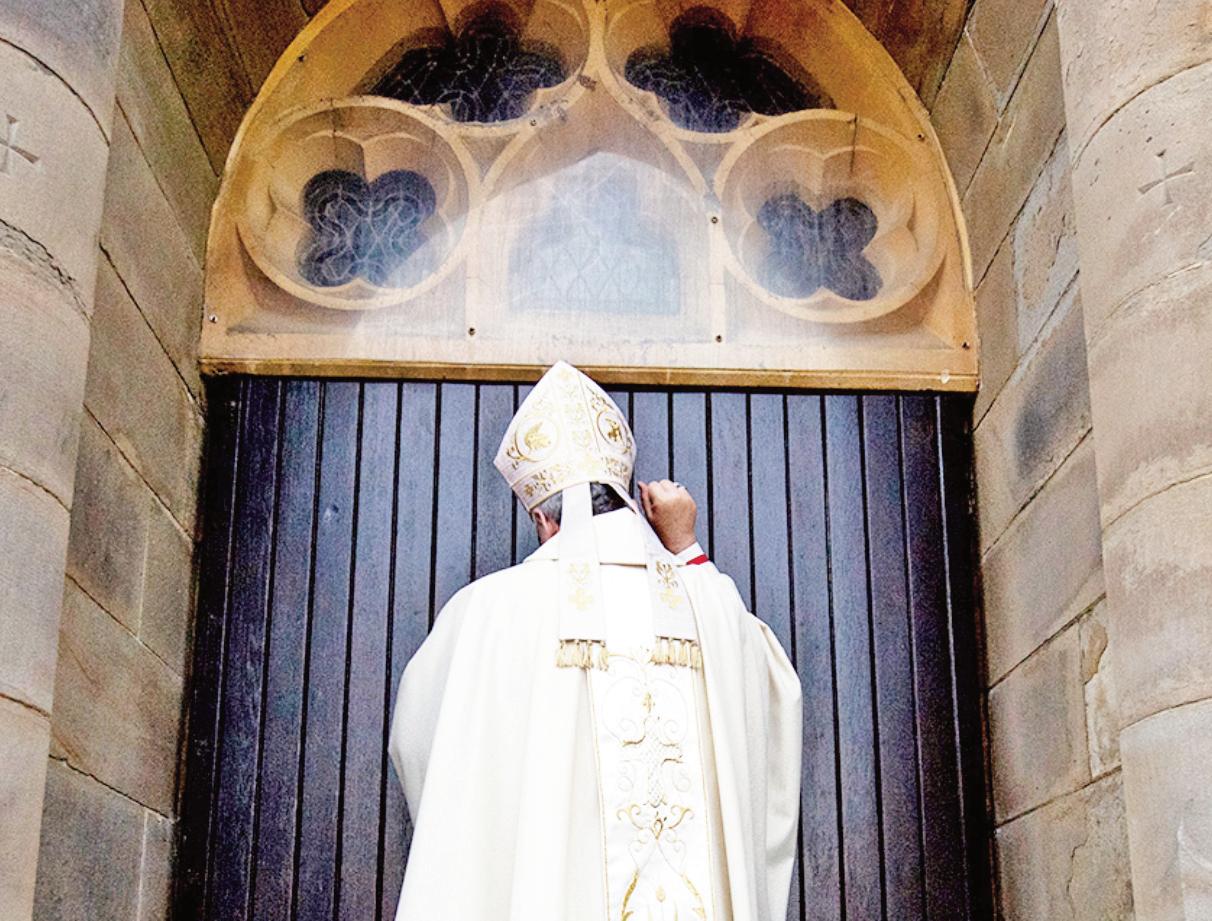
cbcew.org.uk
“We are immensely grateful to Pope Francis for this decision and for his inspiring leadership in encouraging us to ‘go outwards’ in mission,” Archbishop Mark wrote.
In a pastoral letter that was read across the Archdiocese of Cardiff-Menevia on the weekend of 14-15 September, Archbishop Mark O’Toole shared the joyful news of the creation of the new Archdiocese of Cardiff-Menevia.
The announcement was promulgated from Rome, following the decision of Pope Francis, on 12 September, coinciding with the Feast of the Holy Name of Mary. This significant moment marks a new chapter for the Catholic community in South Wales and Herefordshire.
“We are immensely grateful to Pope Francis for this decision and for his inspiring leadership in encouraging us to ‘go outwards’ in mission,” Archbishop Mark wrote. He added, “We received this decision more quickly than anticipated, which I believe reflects the confidence the Holy See has in the process we have undertaken.” He also highlighted the significance of the decision being made on the
Feast of the Holy Name of Mary and expressed his gratitude to the lay faithful, religious, deacons, and priests for their continued support and engagement, which have been integral to this process.
In the first five months of 2024, the Archdiocese of Cardiff and the Diocese of Menevia conducted a series of Open Listening Sessions across both dioceses to gauge people’s views on the proposed unification. Archbishop Mark personally attended 42 meetings, which were attended by 605 people, both clergy and laity. Written submissions were also received. The final dossier was submitted to the Nuncio, who relayed it to the Holy See in July, leading to this prompt decision.
In his pastoral letter, Archbishop Mark reflected on the importance of the Virgin Mary as the first missionary disciple and a model of faith and good works. Drawing parallels with
The use of strings of beads to facilitate the rhythm and counting of prayer goes back into antiquity, being devotedly used by those of Muslim and Buddhist Faiths before being widely used by Christians returning to western Europe from the east.
Prayer beads are not only an ancient tradition, but can be ecumenically used to great effect. In the early 1900s, plain rosaries, made of wood and without a cross, were used by Charles de Foucauld amongst those he met of Muslim Faith. ‘My God, I love you’ was said on the small beads and ‘My God, I love you with all my heart’ on the large ones. Surely there can not be a more beautiful, simple and pleasing prayer. When we pray, it is what is in our hearts that matters, not our Faith or the type of beads.
When, in 1917 Our Lady appeared to the three shepherd children at Fatima, they had a rosary of spun sheep’s wool, simply knotted. She asked these children to ‘pray the Rosary every day in honour of Our Lady of the Rosary in order to obtain peace for the world and an end to the war’…
The Holy Rosary is most urgently needed today to bring an end to wars and to stop those that have not yet started… Who knows how many wars have already been averted in this way!
the reading from St James, he emphasised how Mary’s example continues to guide the Church in its mission of service and evangelisation.
“Mary became the first Missionary Disciple, running quickly to visit and greet her cousin Elisabeth with great joy,” Archbishop Mark remarked. He reminded the faithful that Mary, who accompanied her Son on the Way of the Cross, teaches us to embrace the Lord’s invitation to take up our own crosses and follow Him.
Looking forward, Archbishop Mark called on the faithful to continue walking together on the path of the Gospel, deepening their relationship with Jesus and bearing witness to Him through good works, just as Mary did.
Providentially, the creation of the new Archdiocese of Cardiff-Menevia comes as the Church prepares for the Jubilee Year under the theme ‘Pilgrims of Hope’. Archbishop Mark encouraged the faithful to look to Mary as the first Pilgrim of Hope, who embraced Jesus with openness and brought His love to others.
The pastoral letter concluded with a prayer to Mary, written by Archbishop Mark, asking for her to be close to all in the Archdiocese of Cardiff-Menevia, to be like her in loving Jesus wholeheartedly and welcoming Him more deeply into our lives.
When you pray the Rosary, why not dedicate each bead with an individual prayer intention. In this way you will never forget to offer prayers for deceased friends and relatives and for your own family members. Nor will you be distracted from your meditation on the mysteries. Even if you do not remember whom the individual beads are dedicated for, God will not fail to recall your requests.
www.crownofthorns.org.uk office@crownofthorns.org.uk

We are all pilgrims on our way through life. We are all people on a journey through time
I love being Catholic - I often get described as religious but really, I’m a spiritual being on a human adventure and religion simply offers a springboard to help get me there!
What’s great about being Catholic is that everywhere we go there’s likely a Catholic Church or place that ‘like-minded’ folks can get together and spend some time in reflective contemplation. Now, whilst you don’t need anyone else when you do meditate or pray having others around it sure does help in making a more profound impact. After all, “where two or more are gathered in my name - there I am” (Matthew 18: 19-20)
We recently went on a family holiday to Croatia and I went to Mass, a lot! My daughters felt like they were on a tour of old churches!
I don’t speak Croatian but aided by a copy of Universalis on my phone I was able to follow along. What was especially lovely on my first trip to Mass was a baptism that was included into the service - even though I’m not part of the local community I could definitely share in the joy and love of the experience.
I’m a big fan of the teachings and spiritual exercises of St Ignatius and whilst in Dubrovnik we went up the Jesuit steps (made famous by the Games of Thrones for being the steps of shame) and into the church of St Ignatius.
The aim of all St Ignatius’ exercises is to culminate in the contemplatio - to be in a state of awareness that reaches the highest level of contemplation and literally be held in the Divine state of love.
This is found in all forms of spiritual practiceSamadhi in yoga. Enlightenment in Buddhism. Ruhhaniyyat in Islam.
How you get there depends on the traditions you follow or were born in to, but the end result is the same - to reach a higher state of consciousness where peace and tranquillity in all the chaos reigns.
What was particularly brilliant for me on that Sunday morning in Split watching this Baptism was how this little soul being baptised into the church was being held in a collective love. I didn’t know anyone there but that didn’t matter we were all focused on this little brilliant soul being covered in water and laughing about it and holding them and their family in a state of love. No common language was needed just a feeling of love.
Whilst on our travels from Split back to Dubrovnik we planned a stop in a place called Ploce - where I planned a ‘mini- Pilgrimage’, a Camino of sorts into Bosnia and Herzegovina and went to the village of Medjugorje.
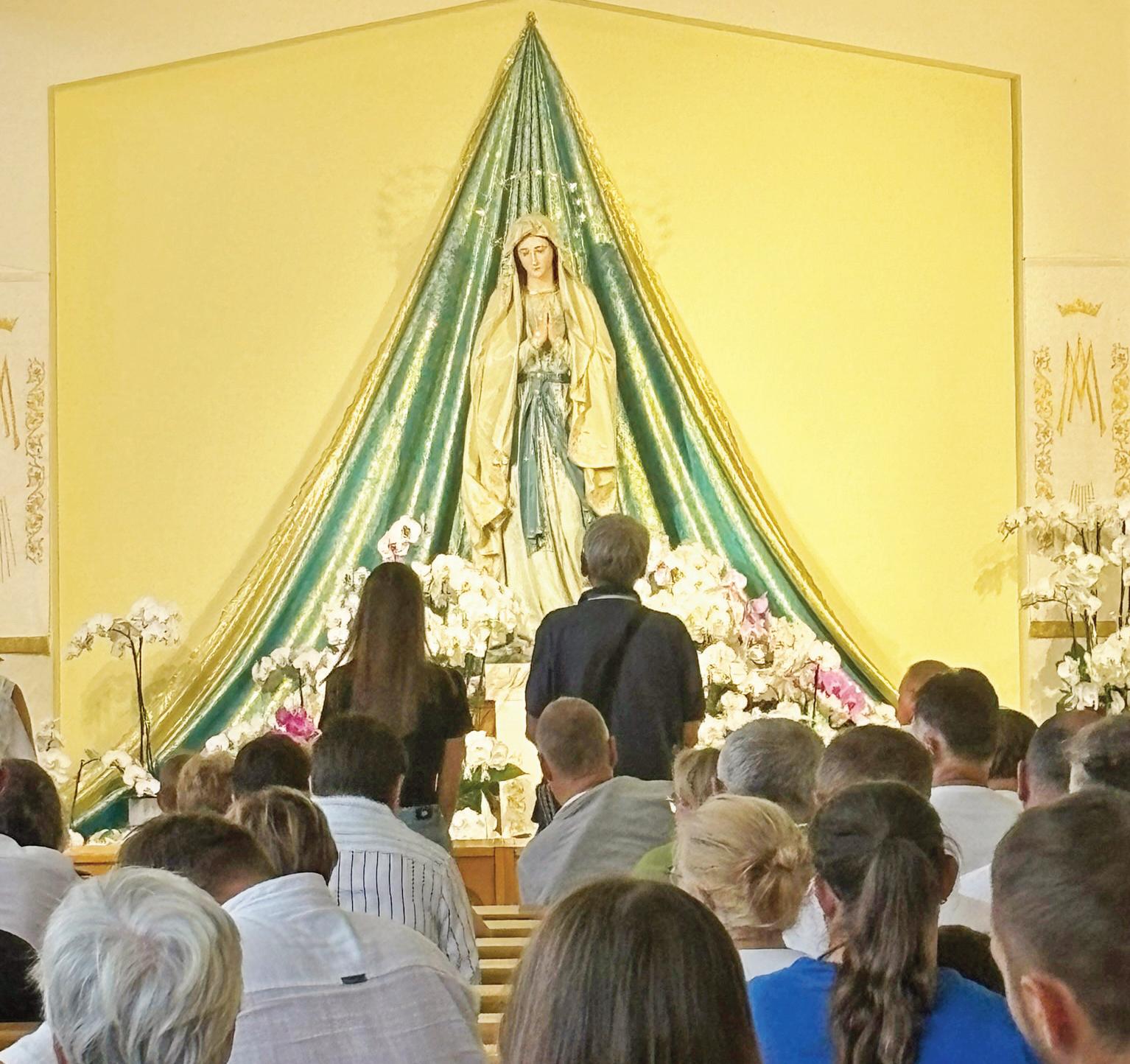
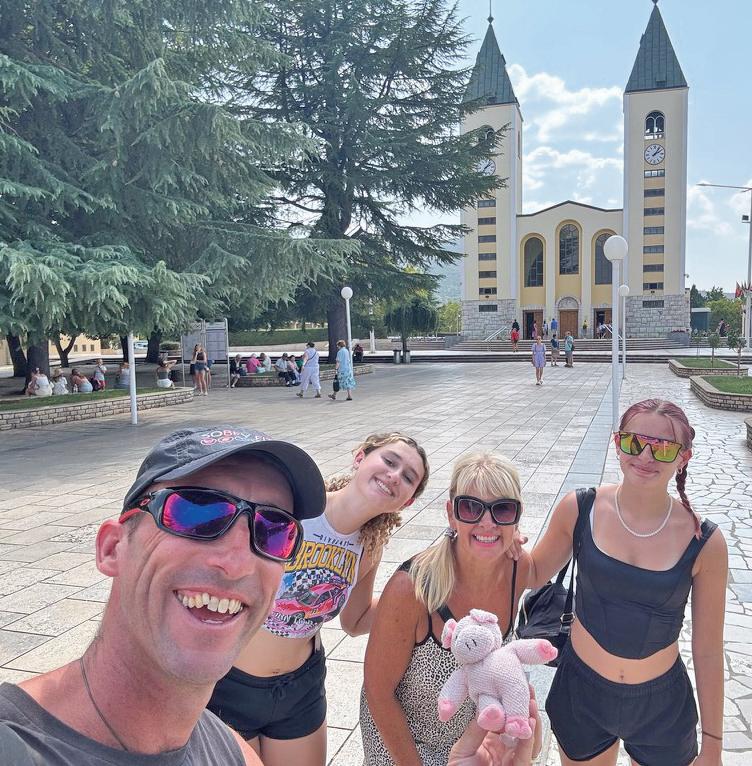
This is a well-known pilgrimage site for Catholics and it’s a place I’ve wanted to go to for a very long time.
Mary, and all things Marian are highly regarded for Catholics, she helps us out by ‘having a word’ on our behalf.
It was my Gran who first really introduced me to the rosary, she was a member of the legion of Mary, and I remember going to ‘Rosary’ with her and I’ve been a fan ever since!
When you’re a natural ‘sinner’ it’s really useful having the Queen of Peace on your sidewhenever I do a deep contemplative meditation and these usually culminate in a triple colloquy, I often find my conversations with our lady most surprising, she doesn’t only give a feminine perspective on the situation but often a dose of common sense and motherly good advice!
Medjugorje is a small village and its name literally means ‘between mountains’ and guess what, it sits between the mountains! It was in 1981 that “Our Lady of Medjugorje” first appeared to 6 children between the ages of 12 and 16. There is an uncertainty about the authenticity of these apparitions as some call the whole thing supernatural - yet the message of Our Lady of Medjugorje is pretty simple - Peace! And a calling to find that peace through discovering God - And there sure is a peaceful setting and ambiance about the place.
The Church that sits in Medjugorje is the Church of St James the Greater - I think he was greater than St James the Lesser simply in stature not because of value!
Nonetheless St James has always had a significance to me. Santiago, as they would call him in Spanish represents the ‘common man’ that’s why the Camino to Santiago De’Compestella is known as the way of the common man, although in 2024 we would say the common person.
As a ‘commoner’ the simplicity of the Camino attracts me - as I looked around the Pilgrims in Medjugorje, like looking around the people in church or in the supermarket - we all share a common denominator that is what the common bit means! Whether we are wealthy or poor, healthy or sick, stressed or at ease. Young or old, male or female we all share a commonality with each other.
We are all pilgrims on our way through life. We are all people on a journey through time!
Traditionally we think of a Pilgrimage as a journey to a Holy Place, but actually ALL places are Holy and Holy is the state of existence we all want to get to.
“All roads lead to Rome” my gran used to tell me, and she was right - so if all roads lead us to where we need to go it doesn’t matter how you get there, or how the person next to you is getting there - we’re all on our own journey of experience - enjoy it
ICN
“There is nothing more powerful for us to do, than to pray. Stand together, pray together. When we gather together, the Lord is in our midst.”
Christians from around the UK and British Isles are being urged to join church leaders and Christian organisations, NGOs and civil society in a National Week of Prayer from 12-20 October.
The campaign, which has been created from a partnership - including Open Doors UK & Ireland, 24-7 Prayer, CARE, the Evangelical Alliance and other national prayer networksis hoping to gather Christians from across the four nations to humble ourselves, repent and pray for lives to be transformed by Jesus, and to see a spiritual awakening in the nations.
Organisers are encouraging people across all four nations of the UK and British Isles to organise their own local events or to attend events in their region and focus on prayer for various areas of society, including education, politics and the arts. The week will include an event at the Emmanuel Centre - close to the Houses of Parliament in London - on Wednesday 16 October, where hundreds will gather to remember the good things God has done across the nations and what He continues to do.
Kamesh Flynn, the project co-ordinator, says: “Throughout the past few months, we have been humbled at how open and engaged people across the nations have been in committing to praying for the nation as a Church collectively. No matter the denomination, individual area of influence, or whether you are gathering three people or 3,000 people, we believe this is a moment for the UK to return to God and flourish in the identity found in Him."
St. Thomas of Hereford 2nd October
Bishop of Hereford, also called Thomas Cantilupe. Born at Buckinghamshire, England, circa 1218, he studied at Oxford, Paris, and Orleans. He was appointed bishop of Hereford, acquiring a wide reputation for sanctity and charity and serving as one of the most capable counsellors of King Edward I (r. 1272-1307). He also was a stern opponent of simony and all forms of secular encroachment upon his episcopal rights. His relationship with the archbishop of Canterbury deteriorated over matters of jurisdiction, culminating in Thomas' excommunication by the archbishop in 1282. He appealed to the papal court but died be-
Church leaders from across denominations have been quick to throw their support behind the campaign.
Archbishop Angaelos, the Coptic Archbishop of London says: “There is nothing more powerful for us to do, than to pray. Stand together, pray together. When we gather together, the Lord is in our midst. This week of prayer, let us pray for our nation for those deprived the right to believe or have their own faith."
The Lord Bishop of Winchester, the Rt Rev Philip Mountstephen commented: “We are an empowered people and in the Spirit we can pray to the creator of the universe and believe that things can and will change. Let us pray!"
Father Dominic Robinson SJ, from Central London Catholic Churches says: “We want to invite you to gather for the National Week of Prayer as Christians together, remembering our need for God, thanking God for His great gifts, and praying as Christians together for the reawakening of the soul of our nation."
Partners for the National Week of Prayer include Open Doors UK & Ireland, 24-7 Prayer, CARE, the Evangelical Alliance, Christians in Government, the City Prayer Breakfast, Christians in Politics, the National Day of Prayer and Worship, Liberal Democrat Christian Forum, Conservative Christian Fellowship, the Coptic Orthodox Church, Christians on the Left, transformwork, Local Houses of Prayer, Word & Worship, and the Christian Embassy London.
For more details see: www.nationalweekofprayer.uk/

fore any decision was reached by the Pope. Despite the controversy, Thomas was revered in England and miracles were reported at his tomb; in 1320, he was canonized.

More than a million children to
A Catholic charity is hoping to exceed last year's milestone of more than a million children joining a campaign to pray the Rosary for peace in the world's conflict zones.
Aid to the Church in Need (ACN) is holding its 'One Million Children Praying the Rosary' initiative for the 19th year in the row.
ACN (UK) National Director Caroline Hull said that the charity is "hoping to surpass last year's record of 1,039,628 children praying the Rosary for peace around the world".
This year's motto - "Pray the Rosary and there will be peace" - places at the centre of the campaign the request made by Our Lady of Fatima in 1917.
Through this initiative, ACN is also participating in the 'Symphony of Prayers' campaign, which Pope Francis called for on the occasion of the 2024 Year of Prayer - and which also paves the way for the 2025 Jubilee Year.
In a statement, Cardinal Mauro Piacenza, ACN (International) President, and Father Anton Lässer, ACN (International) Ecclesiastical Assistant, wrote that everyone should "apply strength and imagination, so
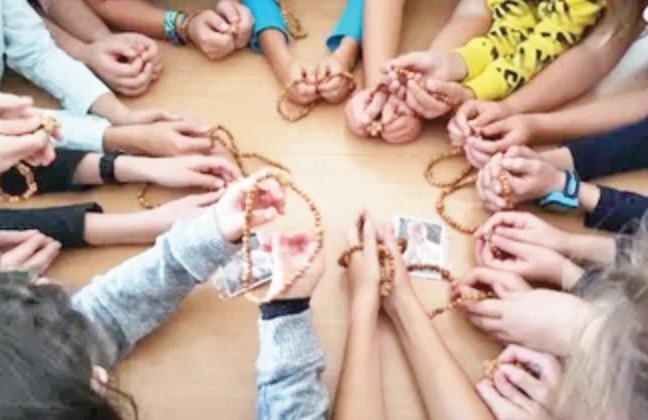
that in as many places as possible prayer meetings can take place.
"Go to children's groups, schools, prayer groups, radio and television, digital platforms, social media… and win over your own children and grandchildren for the prayer of the Rosary."
The target of a million children praying the Rosary for peace was reached for the first time on 18th September last year.
The 'One Million Children Praying the Rosary' campaign has taken place every year on 18th September since first being organised in Caracas, Venezuela in 2005.
For details of how you can get involved with future events: www.acninternational.org/millionchildrenpr aying
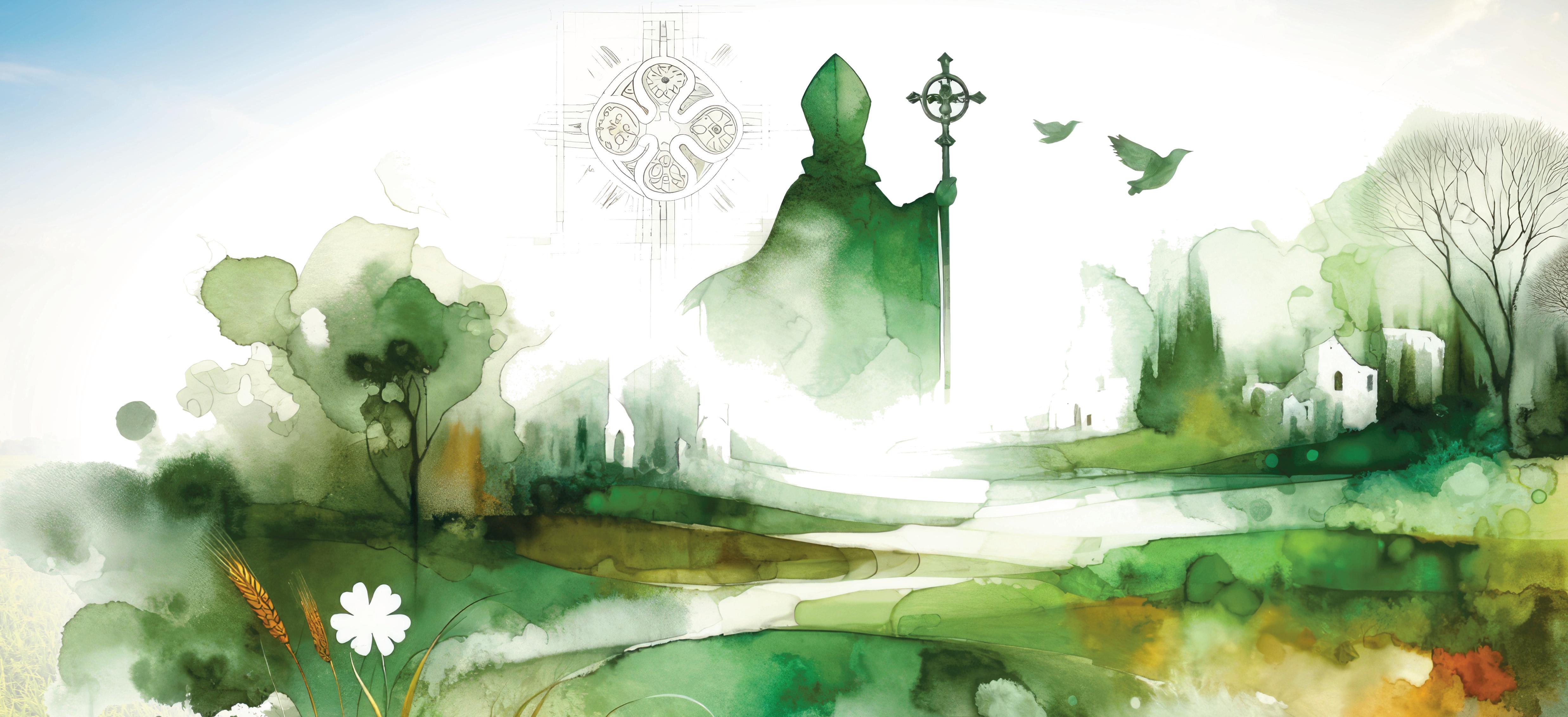

Rt Rev Dr David Oakley Artists throughout the ages have portrayed her as a woman of prayer
October is traditionally the month of Our Lady and the Rosary. With Mary, we journey through Jesus’ life, ministry, dying and rising, and we seek to appropriate the grace-filled life of these mysteries on our own humble lives today. Our Lady has so much to teach us about mission and evangelisation. Artists throughout the ages have portrayed her as a woman of prayer. Sometimes, we seek to discover the action we are called to undertake as disciples of the Lord. It never ceases to amaze me how much time the saints spent in prayer, before they did anything else.
Last year, it was a privilege for me to read a book called Heart Fire: Adventuring Into a Life of Prayer by Johannes Hartl. It was one of those books which is very difficult to put down. In some respects, it was the personal journal of someone who sought to take discipleship seriously, someone who believed in the power of intercession. What struck me above all, was the confidence which lay at the heart of this man’s prayer. His life then reflected his prayer. There was a biblical proportion about it all. You may like to read it for yourself.
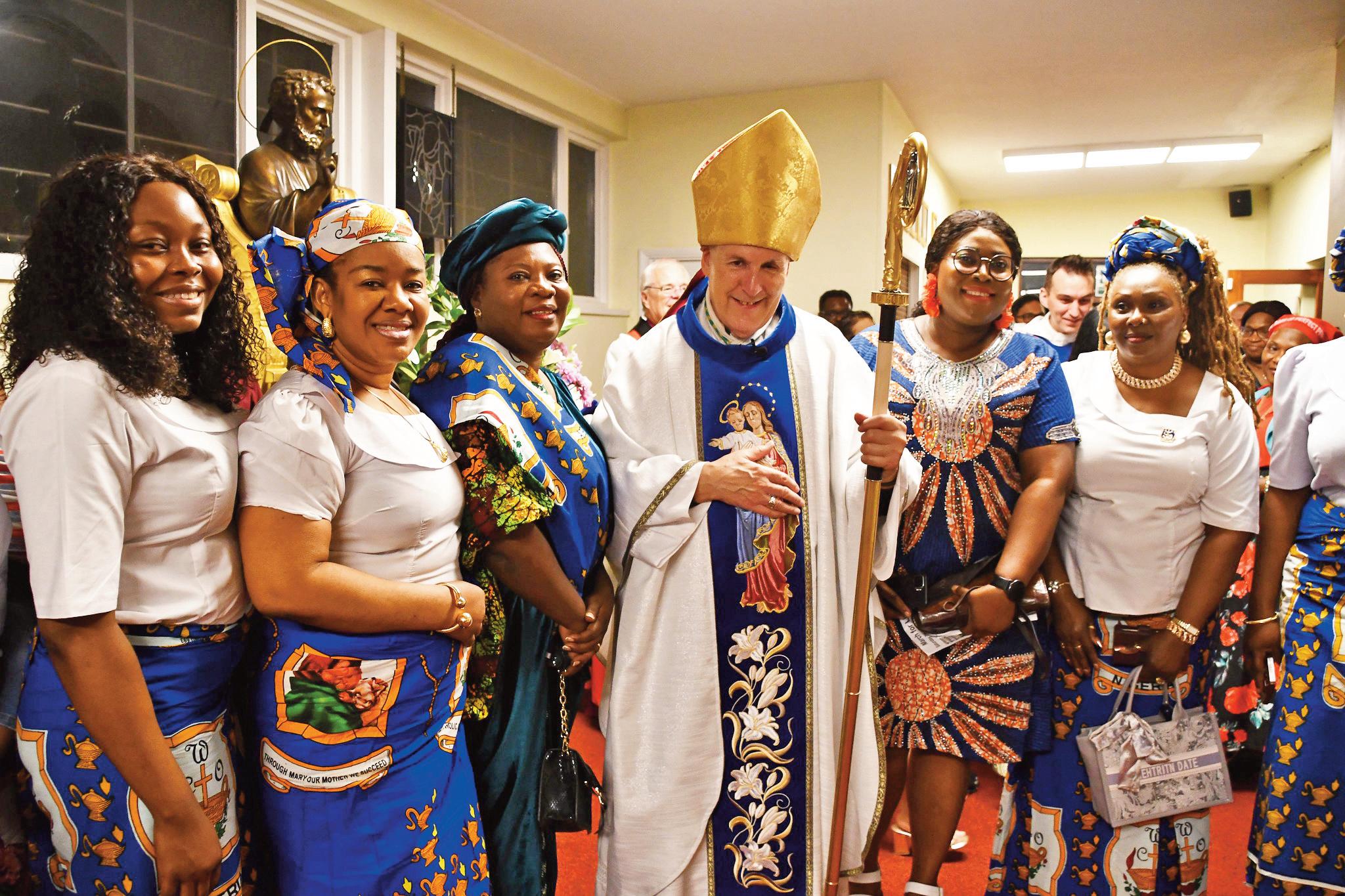
Bishop David meets with parishioners from Our Lady Help of Christians, Luton
Over the years, many have shared with me about their struggle with prayer. Increasingly, it seems to me, this struggle is something we need to reflect on. It is intimately connected to our capacity for mission and evangelisation. The first problem we often encounter, is making time for prayer. We would not begin preparations to run a marathon by running
twenty miles on the first day. Similarly, we may only need to commit ourselves at first to ten minutes each day for prayer. The important thing is to set aside some time and to ensure that this is part of our everyday routine. And how do we use the time? When we read the evangelist Luke’s accounts of Mary, there is a sense that Our Lady’s prayer is rooted in the scriptures. She dwells in the place of God’s promises to His people. The Annunciation is packed with references to the Old Testament scriptures. The scriptures have always been
part of my own prayer routine. Sometimes, one or two verses can keep me going for days and even weeks. This is not about devouring the word and rushing on to the next thing. We need to savour what we have heard. Keep in mind, the Lord is on our side. He wants us to drink deeply from the well of His sacred word. Karl Rahner, an important theologian at the time of the Second Vatican Council, once wrote, ‘In the days ahead, you will either be a mystic (one who has experienced God for real) or nothing at all.’ Maybe the idea of
contemplative prayer seems beyond us. If so, we might keep in mind, the wisdom and experience of St Teresa of Avila, ‘contemplative prayer is nothing else than a close sharing between friends.’ Prayer enables us to become missionary disciples.
Bishop David is the Bishop of Northampton and is Chair of the Bishops Conference Department for Evangelisation and Discipleship
Hodder & Stoughton is delighted to announce the publication in November 2024 of The Hodder Sunday Missal.
Our standard pricing is below, including an introductory offer for parishes, deaneries or dioceses wishing to place an order in bulk. For more details, interested parties should call our sales manager Emily Short on our Missals Hotline: 020 3122 6074 or email missals@hodder.co.uk
Published by religion and theology imprint Hodder Faith (part of John Murray Press), The Hodder Sunday Missal is a brand-new edition to add to the range of missals currently available, and will provide the proper texts for all Sundays in the three-year liturgical cycle, along with the major feasts and solemnities in the universal calendar. Publication will coincide with the introduction of the new lectionary this Advent which will use the English Standard Version-Catholic Edition (ESV-CE) translation of the Bible and the Abbey Psalter.
Easy to use: This handsome 2-colour resource features the clearest-available layout on the market to facilitate full participation in the celebration of the Mass. Perfect for those new to the Church as well as all Catholics.
A beautiful gift: Two editions – red and blue –will be printed, each in 2 colour, and bound with a durable imitation leather case and a
foiled blocked title, with head and tail bands and 4 separately coloured satin ribbons.
Organised by Liturgical Year: The Missals will preserve the integrity of each liturgical year (A, B and C), and, within each year, help readers learn more about our journey through the liturgical seasons.
Additional features: The Missals also include introductions to each year and season, a short overview of each Sunday Mass for the 3-year cycle, beautifully illustrated section dividers, introductions to the key parts of the Mass, and resources for personal devotion.
Presenting a brand new offering to the Church, The Hodder Sunday Missal will not only provide everything Catholics need to prepare for and participate in Sunday Mass, but it will also offer a range of other devotional and catechetical material for people wanting to engage with the wider spiritual traditions of the Church.
Publishing Director at Hodder Faith Andy Lyon commented: ‘We are called to conform our lives to Christ and we respond to this calling in our liturgy, most particularly in the Mass. The Hodder Sunday Missal has been designed to draw us closer to Jesus in the Eucharist, to sweep us up into the rhythm and drama of the church year, and to develop an intimacy with Jesus in our personal prayer.’
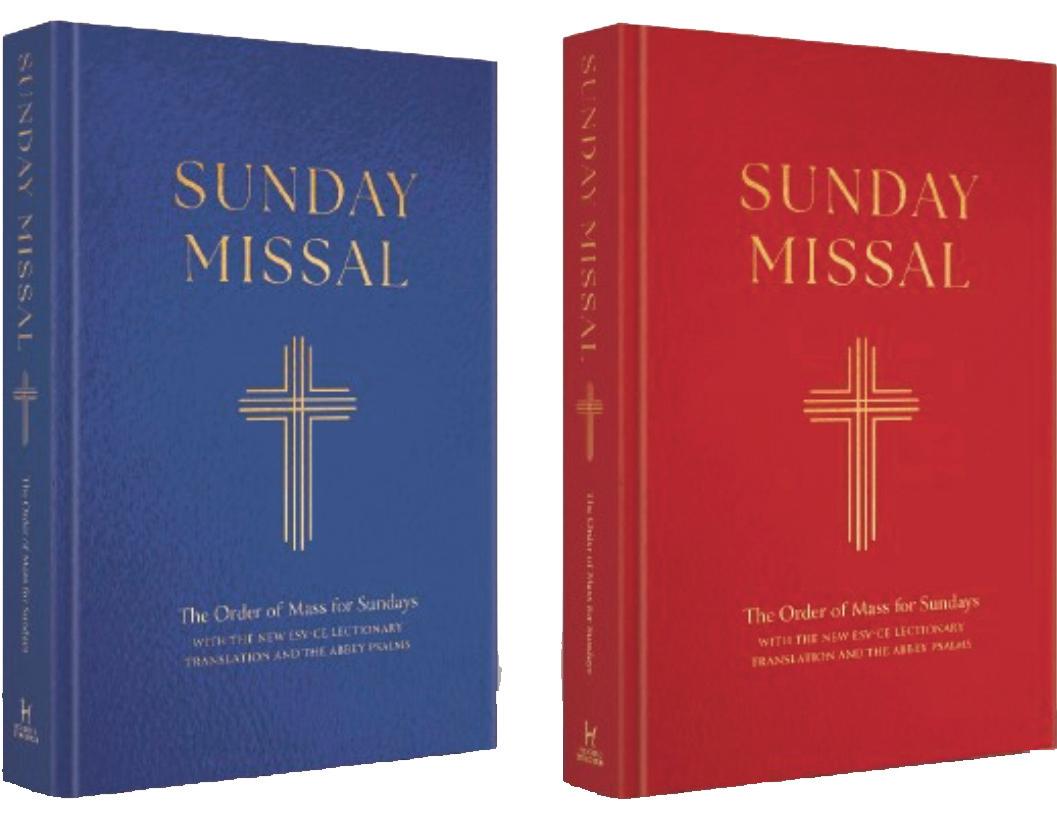
The Hodder Sunday Missal (red): ISBN 9781399822770, 170x115mm, hardback, £18.99
Packs of 10 available: ISBN 9781399823296, £130.00
The Hodder Sunday Missal (blue): ISBN 9781399822831, 170x115mm, hardback, £18.99 Packs of 10 available: ISBN 9781399823289, £130.00.

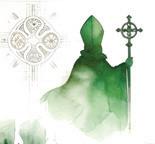

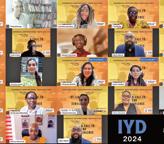
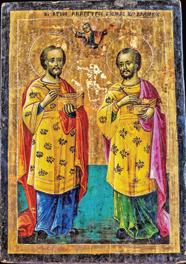




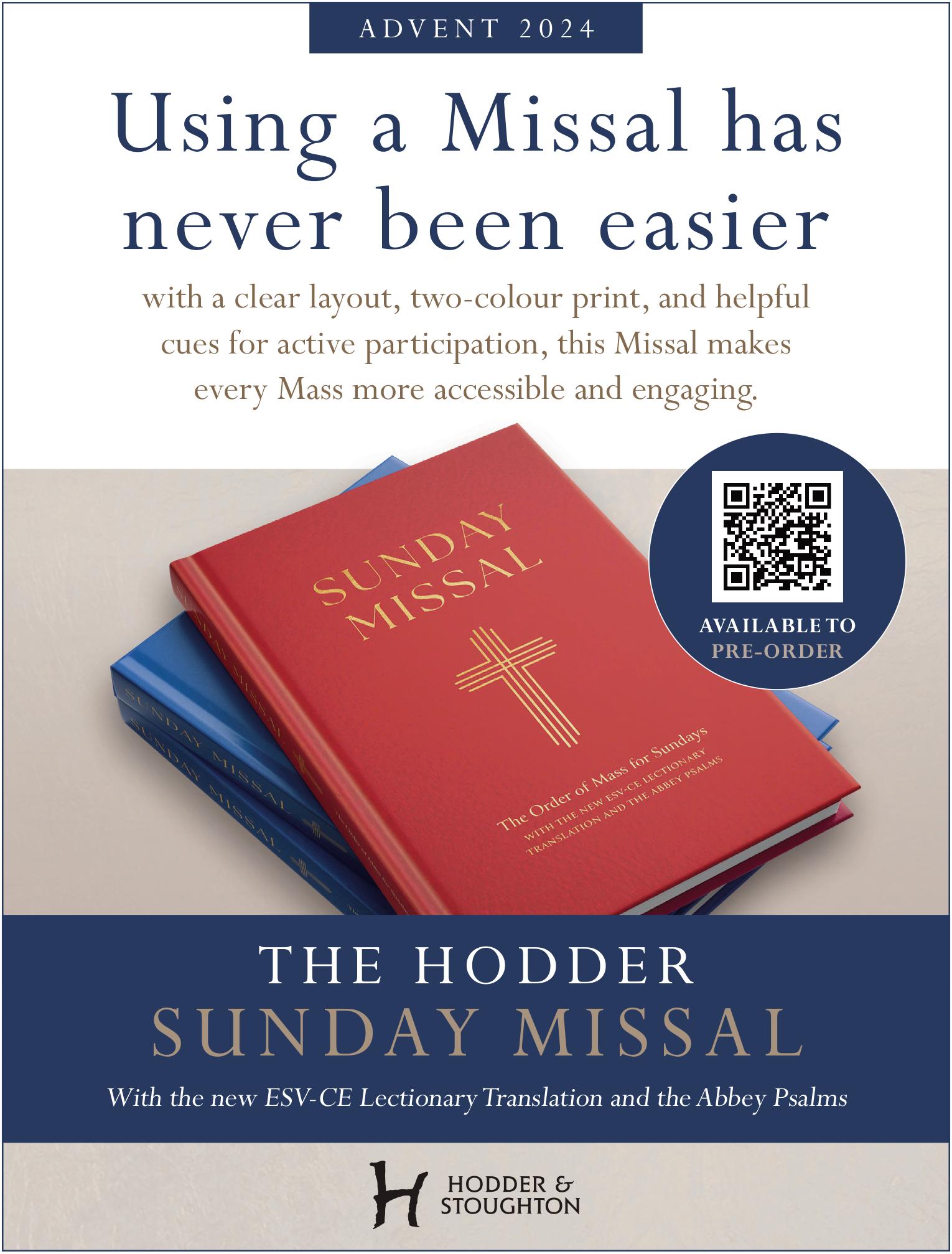
Pact supports people of all faiths and none, working in more than 60 prisons, in courts, and in communities across England and Wales
Prisoners’ Sunday falls this year on 13 October. With the support of Liaison Bishop for Prisons Richard Moth, Pact invites parishes across England and Wales to bring people in prison, and their children and families, before the Lord in prayer.
Pact is the national Catholic charity supporting prisoners, people with convictions, and their families. This year marks 125 years since the charity’s formation as the Catholic Prisoners’ Aid Society. Today Pact supports people of all faiths and none, working in more than 60 prisons, in courts, and in communities across England and Wales. The support of Catholic parishes has been and continues to be invaluable.
Our prisons are in crisis. There are record numbers of people behind bars. Inspectors regularly report instances of vermin, violence,
self-harm and people languishing in cells with nothing to do. At the same time, too many people are released with no home, no job, no family and no hope.
The ripple effects of this crisis are felt well beyond the prison walls. The lives of hundreds of thousands of families and children are affected as they too serve a hidden sentence. Having a mother, father, husband or wife in prison can have a devastating impact – more than half of families tell us they are struggling to afford the basics for them and their children.
In September, every Catholic parish will receive a Prisoners’ Sunday pack with a poster, bidding prayers, and a message from Pact President Cardinal Vincent Nichols. The charity encourages all parishes across England and Wales to mark the day on 13 October - or another nearby Sunday - respectfully
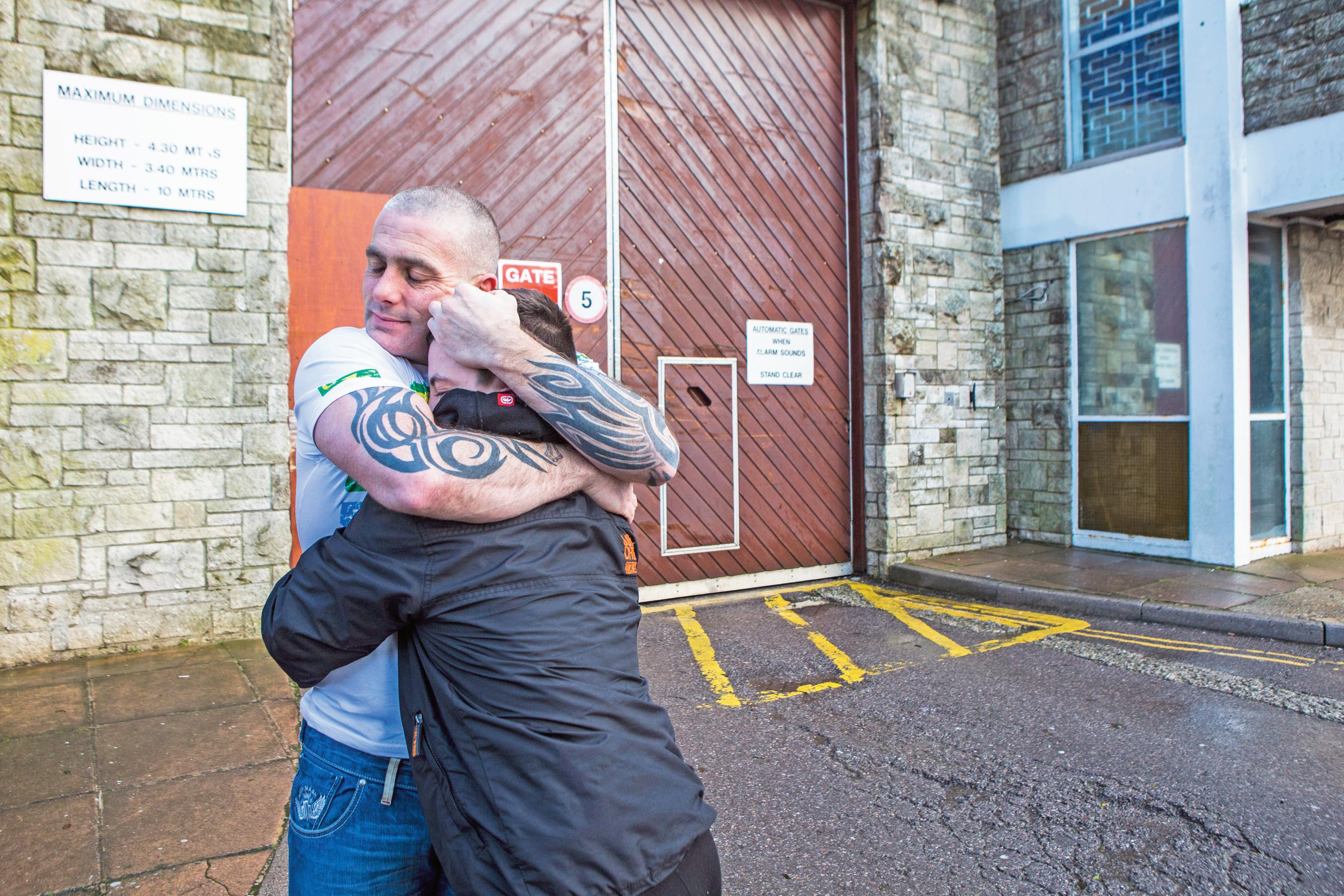
requesting a second collection for those who choose and are able to donate. The money raised will help Pact to do more in the year ahead to support women and men in prison and their children and families.
Pact CEO Andy Keen-Downs shares: “Every day, I hear how our prisons are in crisis. Prisons are overcrowded and inspection reports are often dire. There are many in prison
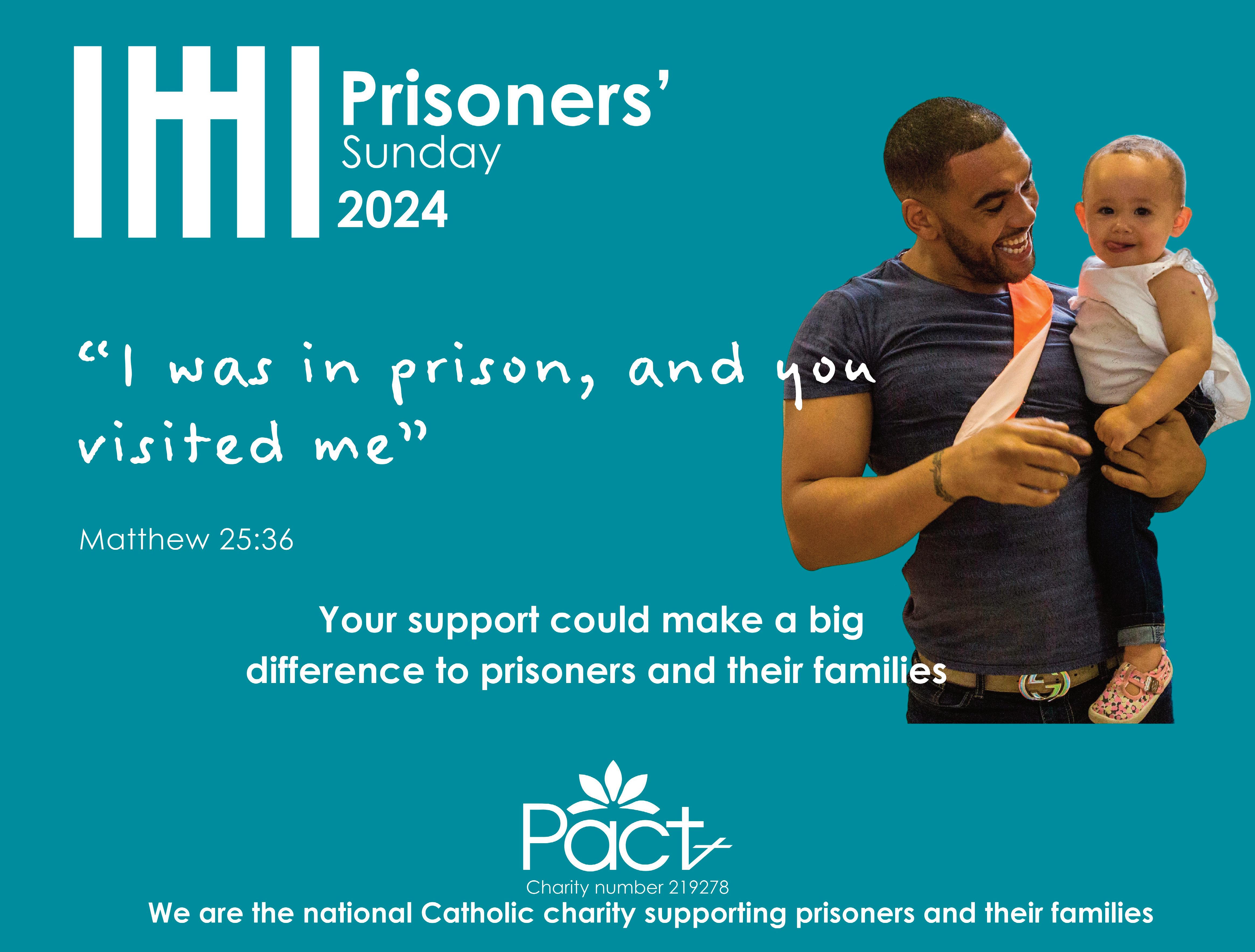
experiencing mental health crises. Whilst with the new government we are waiting for system change,we must carry on, sleeves rolled up on the prison wings and landings.
The change we make happen every day is in the human heart. People only change when they believe it is possible and when they find the motivation.”
“This largely came from me I think – so I’m rather second guessing myself – but I think I got into a bit of a tangle with it. I think we need something more focused on what’s happening right now. What do you think of this?”
“The Prime Minister recently announced that our prisons are in crisis. As a friend and supporter of Pact, you will know that we have been saying this for some time and calling for radical change. Prisons are not just overcrowded; they are now almost completely full. The new Government has resorted to an early release programme to free up spaces and to begin to tackle the squalor, and record levels of violence and self-harm. And so our Pact workers are busier than ever. Over the coming months, thousands of prisoners will be released early. Many will hope to be reunited with family.
Some will have no one to return to, and nowhere to call home. Most will need a job. Many will be in urgent need of practical, financial and emotional support. The probation service is struggling, and in some areas, is overwhelmed. So, as has been the case so many times in the past, we are stepping up, and we are calling for help. We will do all we can to support these men and women to make a fresh start, to give them the support they need to live crime free lives. As we mark 125 years of service, please support us this Prisoners’ Sunday, to build bridges of hope for people leaving prison.”

Lady of the Wayside Catholic Primary School in Shirley. The trail celebrates the 30th anniversary of Fairtrade. Children's posters are displayed in well-known shop windows. Children and families are being encouraged to take part in the trail and an accompanying quiz to learn more about Fairtrade, with clues to the questions hidden in the poster borders.
Fairtrade Fortnight had the theme, 'Be the Change,' highlighting how consumer power can support farmers overseas to build stronger, more resilient communities.
This Fortnight, over 550 local community activities took part, including talks, coffee mornings, breakfasts, film screenings, stalls, town displays and church services.
St Luke's Catholic Church in Pinner, Westminster Archdiocese said on its facebook page on Monday: 'Every time each of us goes shopping, we cast a vote for the sort of world we want. So please choose goods with the Fairtrade Mark - it means the growers are paid a fair price. All our local supermarkets have some - look for bananas, tea, coffee, chocolate, nuts, jams, marmalade, sugar, wine and more. So let's all BE THE CHANGE and choose Fairtrade.'
The Solihull Fairtrade Trail in Solihull town centre features artwork by children from Our
The Fairtrade Foundation is celebrating 30 years of Fairtrade products on UK shelves, having been established by CAFOD, Christian Aid, Oxfam, Traidcraft, the World Development Movement and the National Federation of Women's Institutes. Over the course of 30 years, Fairtrade has worked with more than 10,000 local Fairtrade groups and institutions in the UK, including almost 7,000 Fairtrade Places of Worship and more than 2,500 Fairtrade Schools. There are almost 5,000 Fairtrade products from coffee and tea to flowers and gold.
New YouGov research has found that almost nine in ten Britons value fair pay for farmers and workers and 69% say they have bought a Fairtrade product. Two new YouGov research studies commissioned by the Fairtrade Foundation show that Britain's most popular Fairtrade buy is bananas (57%), closely followed by chocolate (54%) and coffee (43%). And four in every five adults in the UK (79%) are concerned about the potential effect of climate change on the price of food in the UK. A similarly high number - 69% - are concerned

about the potential effect of climate change on the supply of food in the UK.
The ecumenical group Christian Concern for One World has produced a Guide 'Fairtrade Fortnight in your Church' and, every day is suggesting 'a small step to support Fairtrade.'
To find out more about Fairtrade Fortnight, visit:
www.fairtrade.org.uk/get-involved/currentcampaigns/fairtrade-fortnight/ Church Guide to Fairtrade Fortnight at: www.ccow.org.uk/what-we-work-on/fairtrade/
CAFOD Fairtrade Resources for schools at: https://cafod.org.uk/education/education-resources/fairtrade-school-resources
Ellen Teague





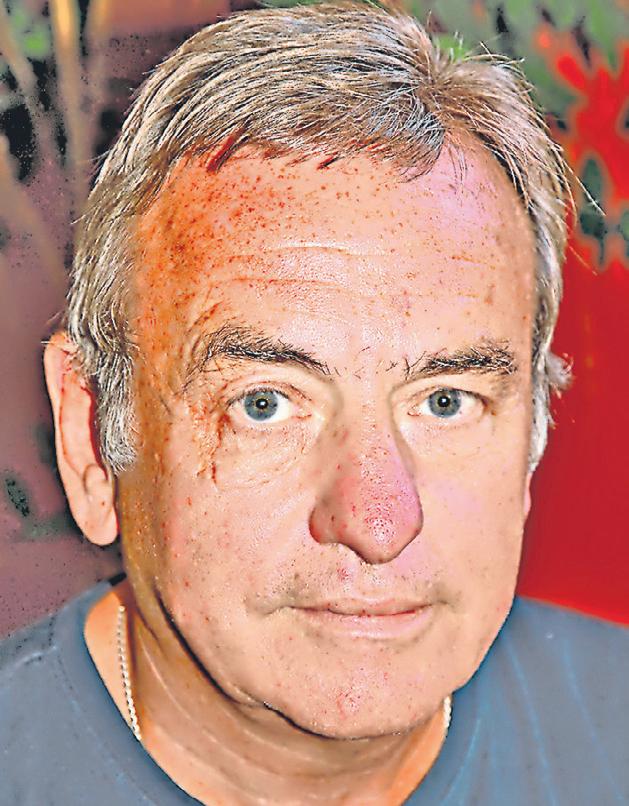
Where there’s a will …
Dr Jay Kettle-Williams
No doubt we’ve all been the object of falsehood or the brunt of a wrongful accusation at one time or another (1). It’s at such times that we might witness that fissiparous nature of humankind. No doubt it’s then, in the face of such injustice, that we either retaliate tit for tat or simply think that to do so would be beneath ourselves, merely pyrrhic, not worth the candle, getting us nowhere but to highlight our resentment, however much justified, at the wrongful, baseless actions of others. So, which way to jump in such circumstances? It’s entirely down to us, or is it?

afford some flexibility as our abilities and the opportunities before us develop. A trite example, for which I ask you to excuse me, is that we might well acknowledge certain constraints when driving down a country road, constraints which we perhaps need not take into account when driving down a five-lane motorway. Not that that image, I admit, really serves in any way as a cautionary tale.
A cautionary tale we recognise as a story, experience or situation that serves as a warning or alert to others. It might involve a lesson or address a moral issue. So perhaps the following personal experience of mine might well fit that bill:
looked a little coy as he said, ‘I don’t suppose I could ask another favour?’
‘Why not?’ I replied, wondering what he was going to say.
‘Let’s stay arm in arm and when it’s all clear, when there’s nobody in the way, we just run like mad along the pavement. I haven’t run for years.’



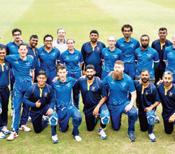
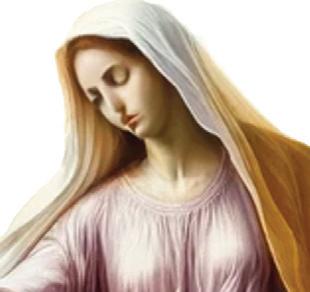



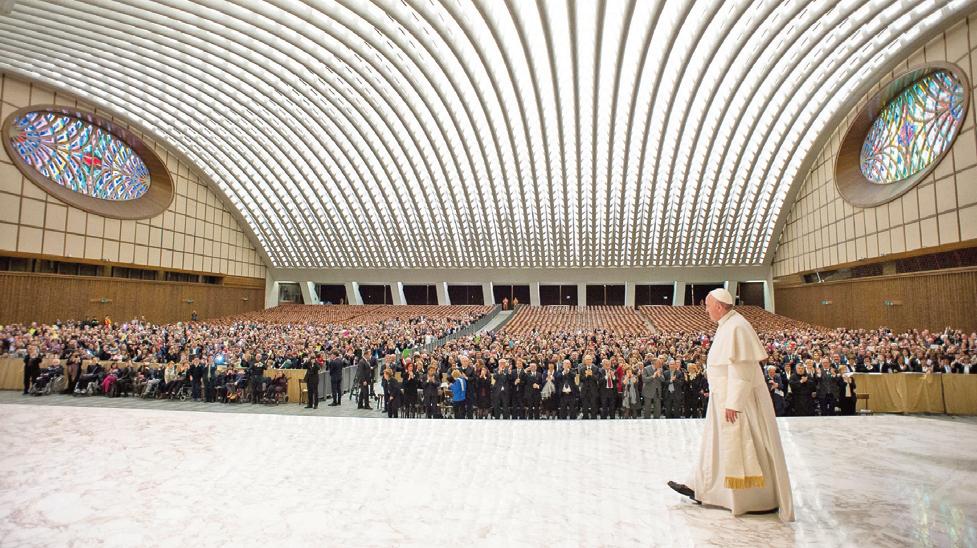


The ability to make choices and to act on one’s own account - the concept of free will and its implementation - have long entertained the minds of many, among them philosophers, scientists and theologians of any number of religious or other persuasions. How come God can be all-knowing, but the ability to jump one way or another is down to us? Where do I stand with regard to such ‘-isms’ as determinism (to the effect that only one course of events is possible), incompatibilism (that free will is incompatible with determinism), metaphysical libertarianism (that determinism is false)?
I’m no theologian. How to address the apparent contradiction of exercising free will within the constraints upon us? I once put the matter to my mentor, a Catholic bishop, who had been tutoring me in a specific course of study. ‘We have the free will,’ he explained ’to act in any one of a number of ways within prescribed parameters [and perimeters].’ And that made sense. We are bound by the human dimension, a dimension which, in itself, might
He was standing on the edge of the pavement, sporting a bushman’s leather hat, his toes on the curb as he faced the roadway, his head bowed as if listening intently to the cars driving past. I was walking towards him, approaching from his left side. ‘You ok?’ I asked. ‘Is there anything I can do?’ It was then that I saw he carried a white stick in his right hand.
‘That would be very kind of you,’ he said and smiled broadly. ‘Perhaps you could help me get across. The traffic is very heavy today.’ He took me firmly by the arm. ‘By the way, would you mind if, when it’s all clear, we could stride across purposefully, march even, like soldiers on parade?’
We set off, arm in arm, vigorously overtaking the other pedestrians crossing the road like us, meeting head on and marching through the ranks of those doing likewise but coming in the opposite direction.
‘That was great,’ he enthused when we reached the opposite pavement. He then
What then followed was like a pantomime moment, to the obvious bemusement of onlookers: two grown men grasping each other firmly by the arm, running along the pavement for all they were worth, both laughing, one spasmodically giving way to raucous giggles as he tried not to lose his hat.
Well, that incident has stayed with me for years. Do we accept the bondage of our limitations or choose instead to work with the opportunities? Well, where there’s a will…
(1) See Deuteronomy 5:20; Exodus 20:16; Proverbs 6:17; The Ninth Commandment Acknowledgements and Attribution: Texts/References adapted and/or adopted from http://en.wikipedia.org under the terms of the Creative Commons AttributionShareAlike License 4.0: http://creativecommons.org/licenses/bysa/4.0/

Dr J L Kettle-Williams is an experienced business communications consultant and wordsmith (tutor, writer, translator).
cbcew.org.uk
“I wish to reaffirm that the Catholic Church has always been opposed to assisted suicide in every circumstance.”
Bishop John Sherrington, Lead Bishop for Life Issues for the Bishops’ Conference, is encouraging Catholics to unite in prayer and compassionate action as Parliament prepares to renew the debate around assisted suicide:
“Parliament has now returned and with it the prospect of renewed debates on the ethics of assisted suicide. The second reading of Lord Falconer’s ‘Assisted Dying for Terminally Ill Adults Bill’, which seeks to legalise assisted suicide, will take place in the House of Lords. There will be an attempt to introduce a similar Bill to the House of Commons.
“I wish to reaffirm that the Catholic Church has always been opposed to assisted suicide in every circumstance. The legalisation of
assisted suicide undermines the sanctity and dignity of human life. There is also now ample evidence across the world that the legalisation of assisted suicide puts the most vulnerable members of society at risk. 1
“The Catholic Church accompanies those suffering and nearing the end of their lives with hope and affection, but also reminds them that their life is precious until the very last breath. This is the work that hospices and other healthcare institutions and hundreds of thousands of individual carers undertake every day, helping the terminally ill and dying to leave this world whilst preserving their dignity. They truly provide assistance to those who are dying.
“In preparation for these challenging debates, let us offer our prayers for those facing the end of their lives, that they may receive the care and support they need to live their final days with respect for their dignity. Let us also pray for our politicians and our country that wisdom and compassion may guide their decisions. I also urge all Catholics to become better informed about the serious problems associated with the legalisation of assisted suicide.
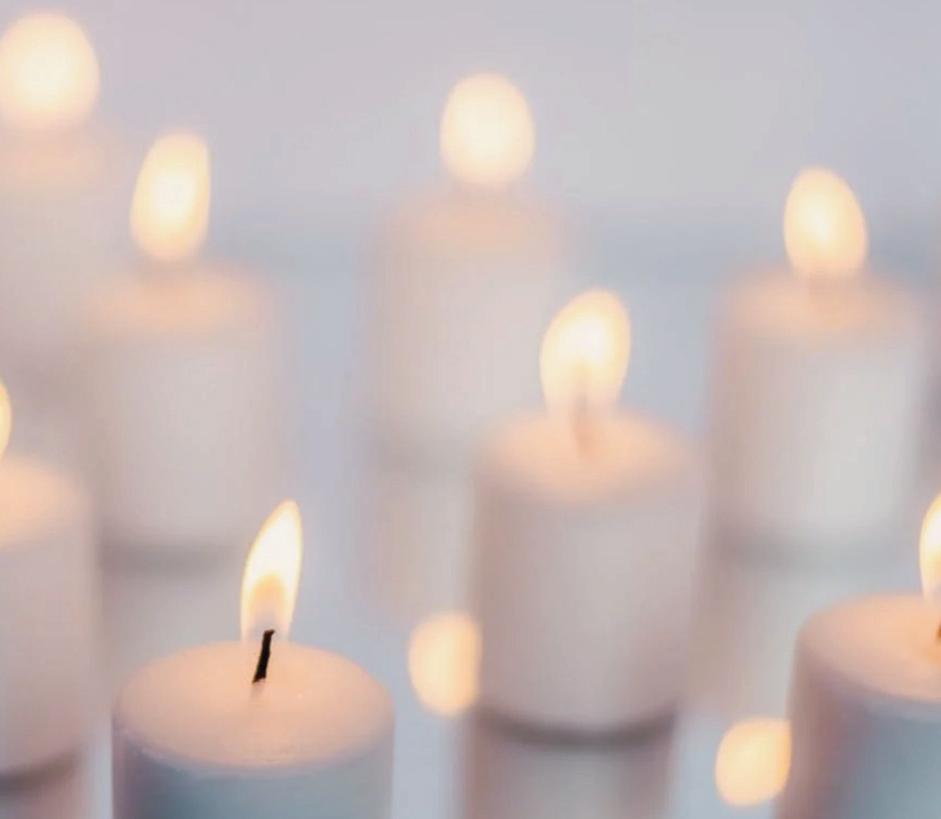
“We encourage everyone to use resources on the end of life that can be found on the Life Issues pages of the Bishops’ Conference website to better understand the implications of assisted suicide. It is also possible to contact your Member of Parliament to ask their views on a number of life issues.
“Let us unite in prayer and compassionate action as Parliament prepares to consider these issues.”
1 See Twycross, R. (2024) “Assisted dying: principles, possibilities, and practicalities. An English physician’s perspective”, BMC Palliative Care 23(1).
The UN Summit of the Future in New York should offer a hopeful future for the global South, but Christian Aid warns that without bold action from wealthier nations, it risks entrenching long-standing colonial inequalities.
The Pact for the Future document, drafted in advance of the summit and still under negotiation, calls for a 'transformation' of global economic governance and more representation for the global South. However, according to Graham Gordon, Head of Global Advocacy and Policy, "If governments are serious about reform, they need to take their steer from those who have been impacted by decades of misguided economic policies rather than those with vested corporate interests who have tried to water down the policies.
"For far too long, the global South has been locked into a rigged economic system that transfers more wealth to rich countries than it receives. These nations suffer
disproportionately from climate change, despite contributing the least, and they pay more in debt repayments than they receive in aid or climate finance. The global South isn't asking for charity; it's demanding justice, based on the 'polluter pays' principle."
The Pact for the Future invites the IMF to "review the sovereign debt architecture," but as Graham Gordon notes, "while the IMF continues to hold so much power, this is akin to asking a loan shark to review debt repayments-when they've been profiting from the system for years. The proof of the pudding will be in the coming months when the IMF has a key opportunity to strengthen the voting power of the global South."
A key priority for Christian Aid is radical reform of the IMF, where the current system disproportionately favours larger economies, granting them a greater share of voting power and access to larger loan amounts.
Christian Aid's policy recommendations for the Summit include:
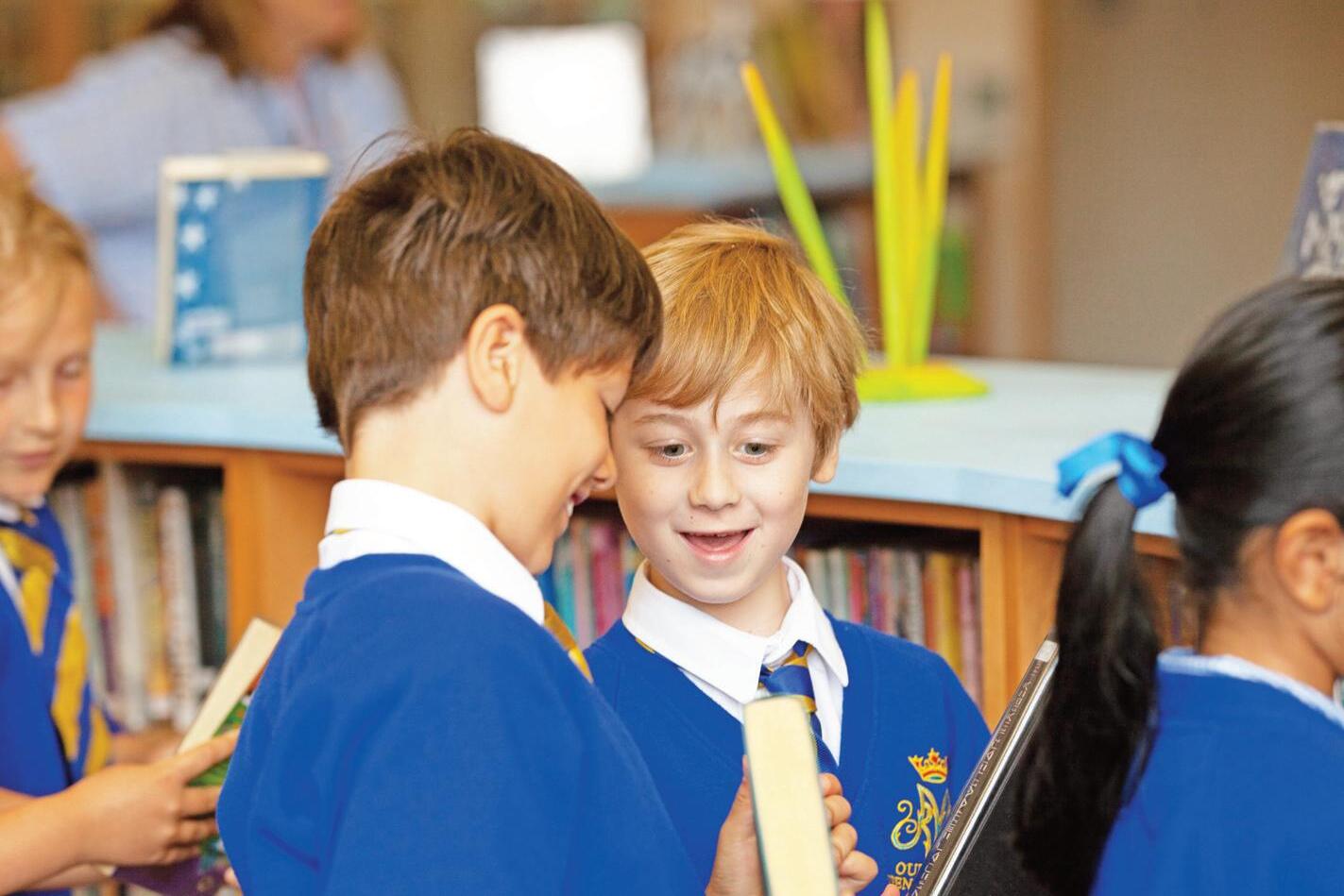

Debt - Reform IMF and World Bank governance structures to significantly increase the voting power of the global South.
Establish a multilateral legal framework under the UN to address unsustainable debt, including through extensive debt cancellation.
Climate finance - Agree a new, ambitious, climate finance goal at COP29 that addresses mitigation, adaptation and loss & damage.
End all investment in fossil fuels, and lead by example in the UK by stopping all new fossil fuel licenses.
Tax - Agree a UN Tax Convention to promote international tax cooperation, tackle avoidance and raise the necessary public finance.
The UK government should support international efforts - and introduce its own measures - to tax extremely wealthy individuals and companies, including the most polluting companies.




ICN/Vatican Media
Pope Francis said he would never forget the smiles he found on the faces of the Timorese people
"I have two words of advice for you: make a mess and respect your elders!" Pope Francis told the huge crowd of young people gathered at the Congress Centre in Dili, for his last public event in East Timor on Wednesday.
In his address, the Pope noted that young people make up a clear majority of the population of 1.4 million, of whom over 95% are Catholic, praising their enthusiasm in living the faith.
Pope Francis said he would never forget the smiles he found on the faces of the Timorese people.
He also invited Timorese youth to recall the sacrifices their forefathers made in laying the foundations of the nation, and took the opportunity to urge them to respect their elders.
A society, he noted, has two treasures: young people and the elderly. "The children and the elderly," said the Pope. "A society that has so many children like you must take care of them. And one that has so many elderly, who are the memory, must respect and care for them."
Pope Francis spoke briefly about the three values of "freedom, commitment, and fraternity."
He recalled a saying in the Tetum language of Timor-Leste-"ukun rasik-an" which means "everyone is able to govern themselves."
The Pope said young people should recall the true meaning and purpose of freedom.
"To be free does not mean doing what we want," he said, noting that freedom means respecting others and caring for our common home.

Pope meets young East Timorese man
He also recalled the value of "fraternity" and the importance of reconciliation.
"You, in this smiling country, have a wonderful history of heroism, faith, martyrdom, and above all, faith and reconciliation," he said.
Pope Francis concluded his meeting with young Timorese by urging them to recall the example that Jesus gave in forgiveness and reconciliation.
dioceseofbrentwood.net
“Suicide is not just the person’s business. Suicide, and suicide prevention, is everyone’s business.”
The Anscombe Bioethics Centre writes: September 11 was World Suicide Prevention Day. It was a day on which we remembered and recommitted ourselves to the task of preventing something that is a tragedy, regardless of who commits suicide or why.
The Anscombe Bioethics Centre’s past and ongoing research on assisted suicide provides a rigorous and evidence-based perspective about how we might best prevent suicide, as we highlighted on this day last year.
This year we would like to draw attention to the publication of an important collection of
essays on The Reality of Assisted Dying: Understanding the Issues. It is something that deserves to read widely, especially by the legislators and policy experts who will be involved in upcoming debates in Holyrood and Westminster about whether or not to legalise assisted suicide.
The collection of essays, edited by Baroness Finlay of Llandaff and Julian Hughes, according to a recent article, “appears at a critical moment in the UK debate. It provides up-todate reflections from a broad variety of international experts on the profoundly important issues that surround changes in the law.”
The Director, Prof. David Albert Jones, has contributed an essay on ‘The imperative to prevent suicide and not to encourage or assist it’. It is an accessible and concise chapter about why every suicide is a tragedy and why suicide prevention is so important.
He writes: “Rather than thinking of suicide as a person doing harm, suicide prevention
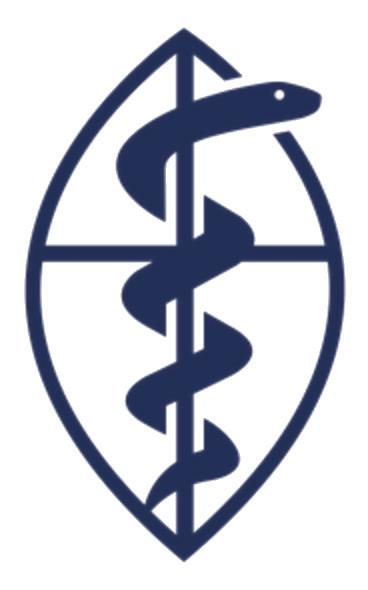
strategies regard suicide as a person suffering harm and ask how we might help avert this. In thinking of suicide, we should begin, then, not with individual actions taken in isolation, but with social solidarity. It is true that everyone must die his or her own death, but human death is never simply a private matter. It involves us all.”
He stresses the important of solidarity as a guiding motive: “Suicide is not just the person’s business. Suicide, and suicide prevention, is everyone’s business.”
Research shows us that permitting physician-assisted suicide encourages the rates of non-assisted suicide.
It is therefore crucial to prevent physicianassisted suicide from being permitted and we must maintain laws that forbid encouraging suicide: “The current law in England and Wales against encouraging or assisting suicide helps prevent suicide. The current law is an effective safeguard for the vulnerable which should not be abandoned lightly.”
Throughout history pilgrimage has been a tool that groups pushing for change have used alongside nonviolent direct action protest. For example, The Great Pilgrimage of 1913 was a march in Britain by suffragists campaigning non-violently for women’s suffrage, organised by the National Union of Women’s Suffrage Societies.
Over the next few months, we are holding a whole host of climate pilgrimages. We are walking together in a collective push to protect our one and only world. Join us.
NEWBURY –October (date to be confirmed)
Further details – Gabrielle CCAWestBerks@gmail.com
PILGRIMAGE TO THE NATIONAL TRUST AGM 29th October to 1st November
Starts near the site of the Sycamore Gap Tree and ends in Newcastle upon Tyne, to allow attendance inside/outside the NT AGM on 2nd November (to encourage NT to cease banking with Barclays).
8-10 miles walking each day, following Hadrian’s wall on day 1. Hostel accommodation, and bus ride (to cover some of the distance) planned.
Further details – Drew nwchristianclimateactionnw@gmail.com (more details will be posted on a WhatsApp chat. Send email to Drew to join the chat)
rcsouthwark.co.uk
“Visiting the sick has been particularly impactful for me. Watching the Priests administer the sacraments and seeing what it means to those who are dying is amazing.”
Makir Ahmed visits Kenya as part of his training for the priesthood
Seminarians from England and Wales are in Kenya as part of a pastoral placement for their training for the priesthood.
Makir Ahmed, a seminarian for the Archdiocese of Southwark, is taking part in the placement. Makir and his brother seminarians have visited parishes and schools, and even found the time to play football with some of the young people they met.
Reflecting on his experience so far, Makir said: “My time in Kenya has been incredible. The experience of both the culture and the Church
here has taught me much. Although a lot is different from back home one thing that is the constant is the Mass.
“The fact that I can travel halfway across the globe and still receive The Body and Blood of Christ in the Eucharist has reminded me how the Church is truly One, Catholic and Apostolic.
Makir has his fellow seminarians have been documenting their journey on YouTube, where you can see them attend schools and Mass. The placement is to help them better understand missionary work while experiencing the culture of the wider Catholic Church.



A key part of the placement is for the seminarians to see first-hand the varied ways priests support communities around the world. This includes administering sacraments to the dying, which had an enormous impact on Makir who said: “Visiting the sick has been particularly impactful for me. Watching the Priests administer the sacraments and seeing what it means to those who are dying is amazing.”
The laity play an active role in Church life in Kenya, which Makir said creates “vibrant parishes in which every Christian is an active participant”.

“The generous recognition and priority of the National Lottery Heritage Fund in making grants available for this important work will be a source of encouragement to those who care for and use these beautiful buildings."
Archbishop George Stack, Chair of the Patrimony Committee of the Bishops' Conference, has welcomed a new multi-million pound initiative that could see significant sums of money earmarked for urgent repairs and restoration projects for historic places of worship including Catholic church buildings.
The National Lottery Heritage Fund has announced a three-year strategic initiative to invest £100m to help UK places of worship meet long-standing repair and conservation challenges.
“I am both grateful and delighted at this significant announcement by the Lottery Heritage Fund," said Archbishop George Stack, Chair of the Patrimony Committee of the Catholic Bishops' Conference of England and Wales.
“Our churches are places of encounter with Christ through prayer, peace and inspiration, as well as consolation, for those who visit for many different reasons. These sacred spaces are an indispensable part of our rich and varied history and cultural heritage.
"Inevitably, with the passage of time, they become subject to the generational cycle of requiring capital funded repairs. These need to be undertaken, often with extreme urgency, in order to secure and extend a church's life and service at the heart of so many local communities.
“The generous recognition and priority of the National Lottery Heritage Fund in making grants available for this important work will be a source of encouragement to those who care for and use these beautiful buildings."
By Fr Jim McManus
£4.00
Product Code: 1731
ISBN: 9780852314654 www.rpbooks.co.uk
he established his Church on earth. We contemplate all these mysteries of Jesus through the eyes of his Mother Mary as we pray the Rosary. All our great saints and mystics tell us that the Rosary is the great Trinitarian and Marian prayer of our Catholic tradition. It is a spiritual treasure. That is why the subtitle of this book is The Grace of the Rosary.
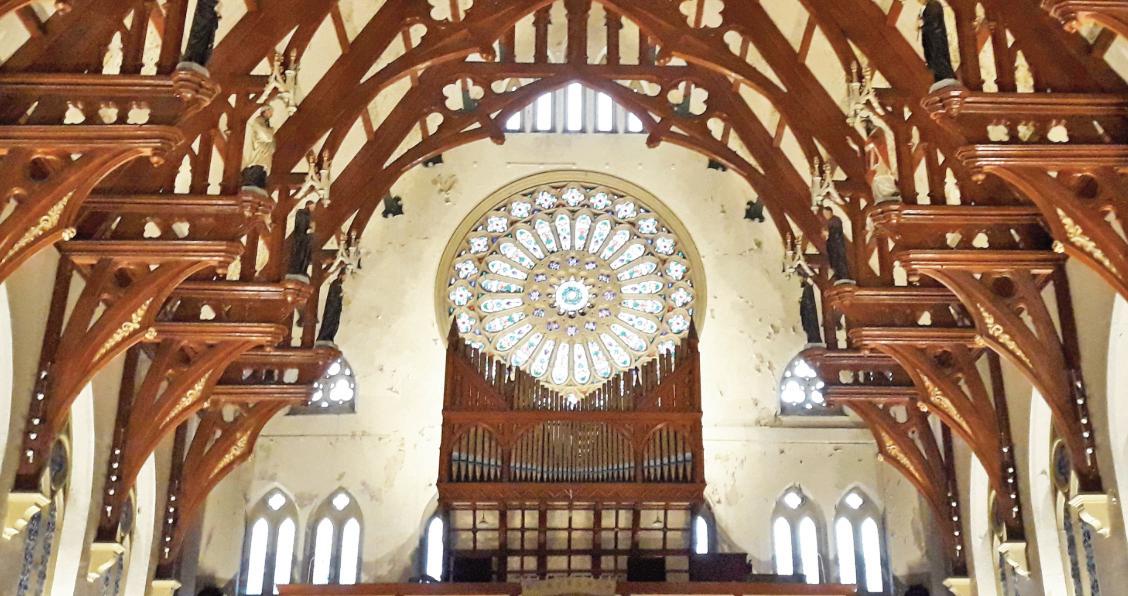
Part of the National Lottery Heritage Fund's ten-year strategy, Heritage 2033, the initiative is designed to ensure that the UK's muchloved places of worship can enjoy a long and sustainable future.
Sophie Andreae CBE, Vice Chair of the Bishops' Patrimony Committee, who has spent a career helping to protect historic buildings and promote them to a wider public audience, said: "There are around 750 listed historic Catholic churches in England and Wales and a number of them are in urgent need of funding for
capital repairs way beyond the means of their local congregations.
“Buildings constructed during the Victorian period have now reached a point where, despite maintenance, materials such as slates and leadwork need replacing, and some highly inventive, indeed iconic, churches of the 20th century are also in need of repair due to new design methods and materials turning out to be less long lasting than thought at the time. "Recognition that these buildings are an important part of the nation's heritage and deserving of funding is truly welcome."

for each decade is simple:first there is a reading from scripture, which is followed by a reflection on the passage; a painting is also included which offers its own take on the subject, accompanied by a brief reflection; finally there is a prayer on some aspect of the mystery. Focusing on a scriptural understanding of the mysteries, this prayerful book will prove a sure companion for everyone who loves the Rosary.
‘An unmatched resource…stimulating and incisive prayers and reflections…a diverse yet cohesive collection of material, perfectly suited for individual or group use.’ Intercom
Every day is rich with possibilities. Yet modern life is busy and can be stressful. It can be challenging to incorporate a prayerful rhythm into our day, to help us find guidance and insight in everyday life.

If you have been a life-long devotee of the Rosary, or if you are coming back to the Rosary after a long break, or if you are feeling attracted to the Rosary for the very first time, you will find in this book, At Home in the Mysteries of Christ, great encouragement, enlightenment and a new desire for a deeper, personal relationship with Jesus Christ. In the Rosary, we contemplate the love and mercy of God the Father, now made manifest to us in the person of Jesus his son; we ponder too the presence of the Holy Spirit through whose power Jesus was conceived in his mother’s womb, performed all his great works of mercy, offered himself for our sake on the cross and rose triumphantly from the dead; we become more aware that the risen Jesus has given us that same Holy Spirit when
By Fr Denis McBride
£12.95
Product Code: 1556
ISBN: 9780852314159
www.rpbooks.co.uk
The Irish Jesuits
£12.95
ISBN: 9781788126984 www.messenger.ie
Sacred Space (www.sacredspace.ie) is a kind of ‘anam cara’ or soul friend. It journeys with us and helps us to slow down, pay attention and find the greatest anam cara of all – God.
Through Sacred Space, the Irish Jesuits have brought the daily practice of prayer in the Ignatian tradition to people all over the world, across twenty different languages. Here, in Sacred Space: The Prayerbook, all the tools of Sacred Space are gathered in one place.

Fr McBride takes a fresh look at the Rosary in this beautifully illustrated book. Through the four sets of mysteries he takes us on a leisurely journey through twenty episodes in the lives of Jesus and Mary, offering us prayerful insights on the way. The format
‘In a stress-filled modern world Sacred Space points to the rich possibilities that each day brings.’ Intercom
‘an invaluable aid to … deepen one’s relationship with Jesus. It is highly recommended.’ Spirituality Journal

Each day of The Prayerbook includes a Scripture reading with points for reflection, as well as a weekly topic enhanced by six steps of prayer.
The prayers and reflections in Sacred Space: The Prayerbook 2025 are written by members of the Irish Province of the Society of Jesus, the Jesuits.
All the students in the class had a hand in creating the book, from the story ideas, which came from personal experience, to the illustrations and beyond
Students in Carmel College’s Foundation Learning Department, a discreet provision for students with SEND (Special Educational Needs and Disabilities) have officially had a book published by St Helens Council.
The book, called “Have A Go, Avocado”, centres around various social anxieties children can have and how they can deal with them. The book was launched at St Helens Book Stop in the town centre.
All the students in the class had a hand in creating the book, from the story ideas, which
came from personal experience, to the illustrations and beyond.
There were plenty of special guests at the launch, including teachers from the College, the Mayor of St Helens, Councillor Jeanette Banks, parents of the children who had made the book and students from Eaves Primary School.
Tim, who illustrated the book, said: “We came up with the idea of a book, and for it to be about an avocado. I then decided to try my hand at illustrating it.
Sat 5 October – Sat 9 November 2024
Once in the country, priests had to take on an inconspicuous disguise that would explain their presence at a household if questioned
During the reformation, mistrust and double agents were a part of everyday life. In Elizabethan England the practice of the Catholic faith was banned for political reasons. Elizabth and her Government are antagonistic towards Catholics because of their loyalty to the Pope. Pope Pius V’s excommunication of Elizabth in 1570 makes all Catholics a threat to her claim to the throne.
There are harsh punishments for Catholics who fail to attend Sunday services in the Anglican church. Heavy fines are imposed and land and property are confiscated. Catholic priests suffer horrific torture and death.
Catholics begin to resort to secrecy and disguise….
Disguises were commonplace during the reformation. English priests trained on the continent re-entered England, they would be ‘disguised in both names and in persons; some in apparel as soldiers, mariners or merchants…and many as gallants, yea in all colours, and with feathers and such like, disguising themselves; and many of them in behaviour as ruffians.’
Once in the country, priests had to take on an inconspicuous disguise that would explain their presence at a household if questioned. On display in the Bar Convent, there is a set of silk vestments that were carried by a priest disguised as a pedlar (door-to-door salesman). If challenged, the colourful vestments would appear to be an innocent bundle of ribbons.
Priests would hide objects used for Mass in plain sight, such as using a carved oak Tudor 16th century bedhead as an altar for celebrating Mass in secret. At threat of discovery the altar could be quickly replaced by the bed & appear completely innocent. All communications must be in code or they would use invisible ink; Mary Ward sent secret letters and to reveal the hidden text, the recipient would have to heat the paper over a flame or a candle. She would write her messages with lemon juice, which would become invisible when dried.
They made use of the architecture and created hiding places, they would always have an escape route. Nicholas Owen (1606) devoted his life to the construction of priest’s hiding holes, to protect the lives of persecuted priests. He also had the ingenious idea of creating a double hiding hole, one inside the other. When

“Everyone was really impressed by it!
“Maybe I would do this again, but maybe for an older demographic, like teens, or maybe adults. That is something I would be interested in.”
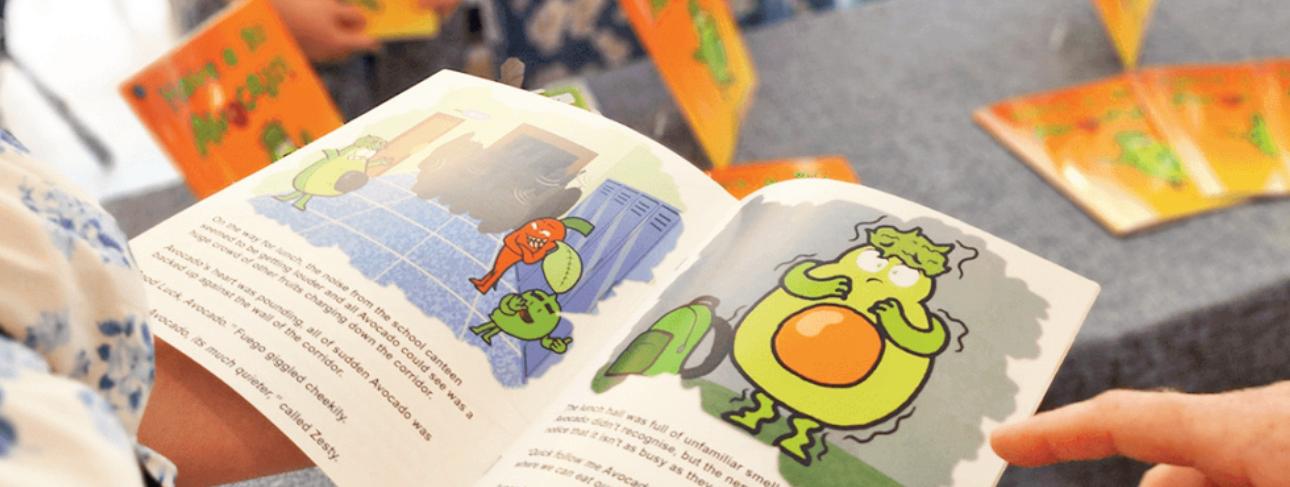

the soldiers found the first one it wouldn’t occur to them to look further. He was eventually captured at Hindlip Hall in the aftermath of the Gunpowder Plot, tortured and killed. A hiding hole can be found in the Bar Convent chapel.
The Sisters of the Bar Convent also took on disguises; as it was very unusual for women to own property, the sisters pretended to be widows and dressed as such in public. Sister Frances Bedingfield, who founded the house, was from a well-known Catholic family, and wisely took on the alias Mrs. Long. The Sisters formed a group of fellow Catholics who they could rely on to keep a secret (Women of the Catholic underground). They would act the innocent (The women played up to ‘but we are only women we wouldn’t be capable of such a thing’).
The location of the convent was key, by staying outside of any jurisdiction, the position of house just outside of the Bar Walls, with Catholic houses nearby and a view of the walls;
this enabled them to see approaching authorities, giving them the time to escape. The Oldcorne Cross will also be on display in the exhibition. Special Collections Manager, Dr Hannah Thomas, has carried the research and has discovered that the crucifix is actually the only known item to have survived the raids on the Catholic houses in the wake of the Gunpowder Plot in 1606.
Dr Thomas said, “This is one of the most remarkable items in our possession and on display in the Bar Convent’s exhibition.
“We have been working closely with experts such as Michael Hodgetts, who has painstakingly researched the history of all known priest’s hiding holes in England and Wales, and we are now confident in believing that this is the only item surviving from a series of raids which took place at the houses of known Catholic associates across the Midlands in 1606, following the discovery of the Plot in November 1605.”
cbcew.org
A new competition starts - open to everyone over 18 living anywhere in the UK
We invite artists to submit artworks that explore faith and divinity while provoking the viewer to think differently about how these have traditionally been portrayed.
Artworks must be two dimensional and either representative of, or alluding to, persons or deities from any religion and from any era. A panel of judges, advised by multifaith and art experts, will award three prizes and select artworks for an exhibition at St John's Waterloo in Spring 2025. All work will be judged on the integrity to the exhibition theme, the innovation of style and technique as well as the creative skill in responding to an inter-faith or racial justice narrative.
Racial justice and inter-faith integrity are the central inspiration for this open call and
subsequent exhibition. Working ecumenically and across faiths, St John’s Waterloo and the Catholic Bishops’ Conference, advised by Art + Christianity, are seeking to raise awareness, understanding and mutual respect of our collective witness in the UK. We aspire to create a richer dialogue about how we see and understand faith and divinity and the value of creativity based on different faiths, cultures and experiences.
Photos of artwork should be submitted by 11:59pm on Monday 11th November 2024.
There will be three small cash prizes awarded to three artists on 4th March 2025 as decided by a panel of judges: 1st Prize of £1,000, 2nd Prize of £750 and 3rd Prize of £500. For more information use the QR code or visit stjohnswaterloo.org

Cloud of Witnesses is funded and supported by Art + Christianity; God who Speaks; St John’s Church, Waterloo; The Catholic Bishops’ Conference; Culham St Gabriel Trust.
Exhibition venue and dates: St John’s Church, Waterloo from 4th March 2025 to 27th April 2025.

You can use both sets of clues to solve the puzzle: the solutions are the same.
CRYPTIC Across
1 Enemy of Gideon's defeated during the witching hour, said one (9)
6 Musical about a High Priest (7)
7 Riddle to penetrate? (5)
9 Change in a little while going back to protect the testament (5)
10 Fielder's body parts used to take wickets in the end (3,4)
11 Foot part's essential to dancing, they say (6)
13 Grand aura about directions for the Holy Roman Emperor (6) 16 Hymn book each sailor kept (7)
18 One has a habit of getting into minicab bother (5)
20 Harsh being back at sea (5)
21 Bigbrewersarenuts,ridiculous(3-4)
22 Tyre here company backs after one phone order (9)
CRYPTIC Down
1 Recommendation when weather's bad in French wine area? (5)
2 Poles follow east Maine river banks to estate (7)
3 Saint Poles back from 2, and the Spanish, see in the morning (6)
4 One's no good in charge at first, but is very sweet (5)
5 Christian Roman's spreading mostly rubbish between Europe and America (7)
6 Paul's fellow soldier damaged pup's chair (9)
8 It runs in Iraq on Brussels tariffs top two phones supported (9)
12 Disturbance with fish supper only half wolfed down (5-2)
14 Spooks wreck a comeback, totally, for ancient language (7)
15 Frenchman's to the fore in Brexit – real European traditionalist on nationality (6)
17 'Beat retreat' code-word (5)
19 Gunners in the ascendant during support for Hebridean island (5)
QUICK Across
1 One of a tribe from whom Moses took a wife (9)
6 High Priest who opposed the Maccabees (7)
7 Soak;suffuse(5)
9 Eurofractions?(5)
10 Close fielding position in cricket (3,4)
11 Arch area of the foot (6)
13 The ------'s War: alternative, now dated, name for World War I (6) 16 Book of hymns or poems associated with the Old Testament (7)
18 Archimandrite;prelate(5)
20 Demanding;forbidding(5)
21 Large vats for steeping and serving beverages (3-4)
22 Ancient Levant maritime country with ports at Tyre and Sidon (9)
QUICK Down
1 Town noted for its Chardonnay and Pinot Noir/Gamay Burgundies (5)
2 Manorhouse;estate(7)
3 Abbot of Bec who became Archbishop of Canterbury in 1093 (6)
4 Cupcake topper (5)
5 Roman Christian who sent greetings to Timothy via Paul... (7)
For more information, please contact Fleur Dorrell – fleur.dorrell@cbcew.org.uk

6 ...and Christian at Colossae cited by Paul (9)
8 Western river boundary of Mesopotamia
12 Organize a new restructure(5-2)
14 Language probably spoken by Christ (7)
15 French, previously Armorican (6)
17 Staccato, energetic, South American dance (5)
19 Outer Hebridean island home of Dad's Army's Private Frazer (5)